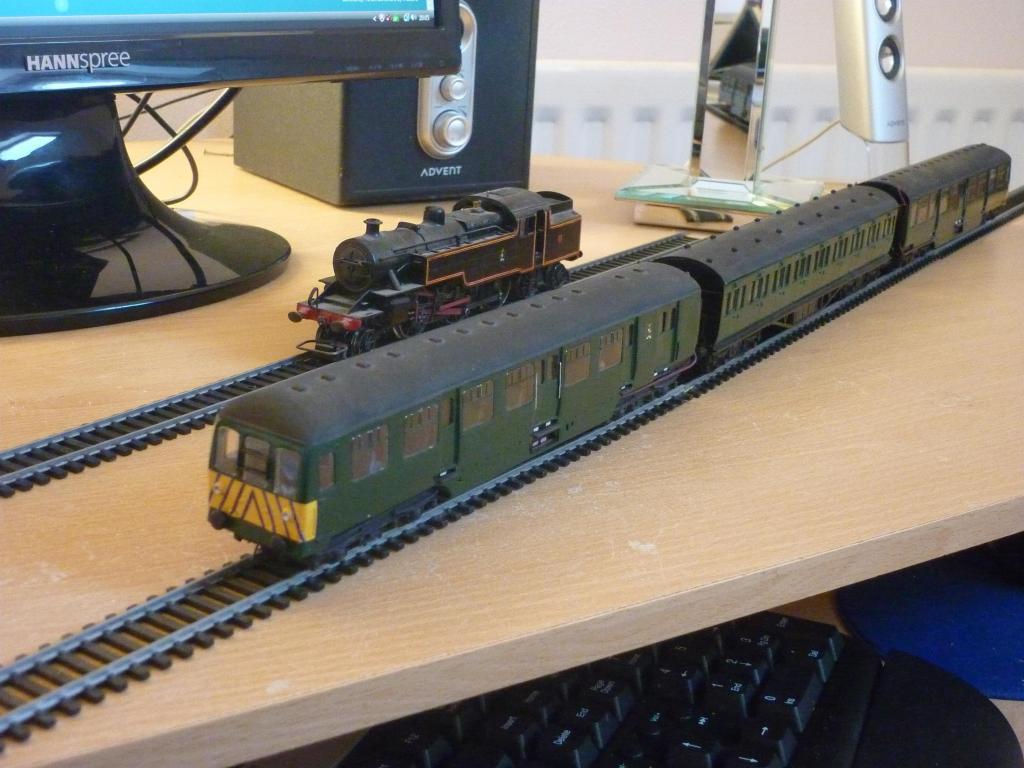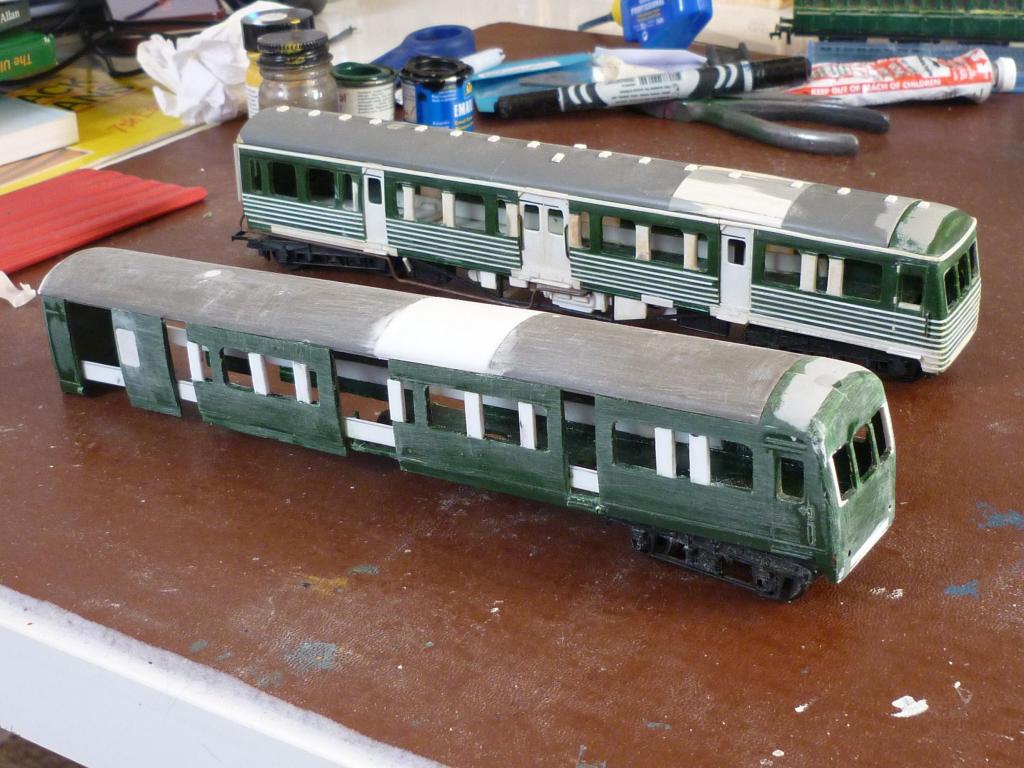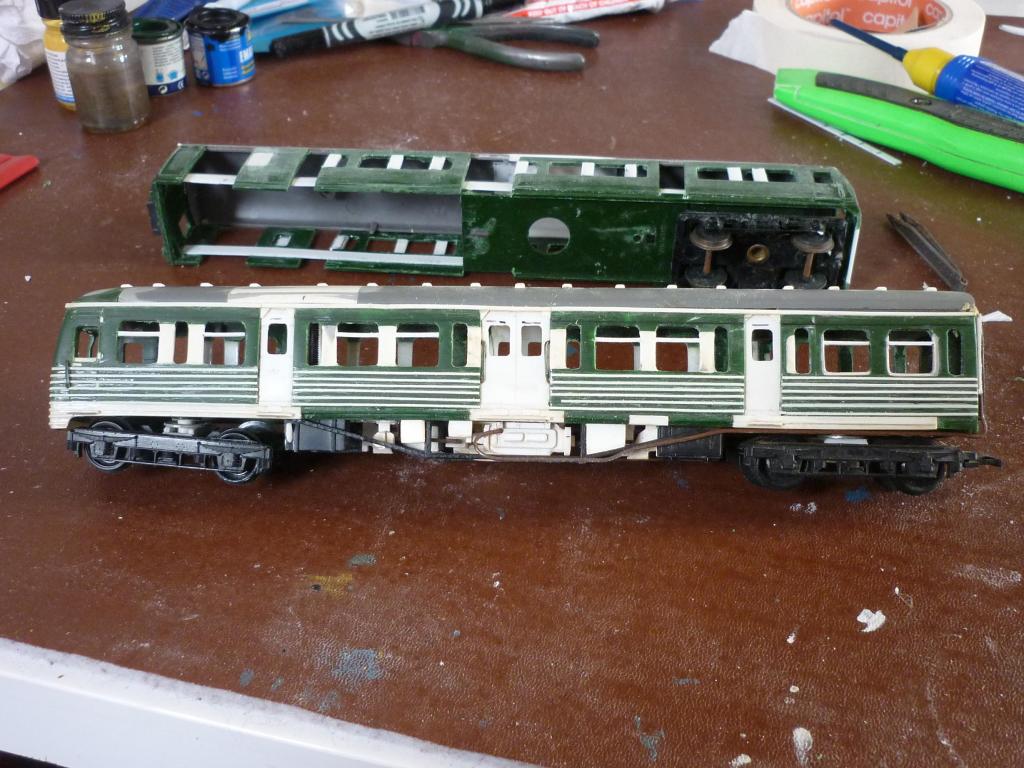-
Posts
183 -
Joined
-
Last visited
Content Type
Profiles
Forums
Events
Gallery
Blogs
Store
Community Map
Everything posted by 33lima
-
Latest progress! Three underframes - real power car, one dummy power car, and a trailer - have now been completed, apart from two needing the distinctive cable ducting between junction boxes being added to the sidesoles and in the case of the outer cars, etched brass couplings being fitted. All four bodyshells have now had the NIR maroon (Damask Red car spray, on top of ford Polar Grey) and had the inner ends and front corridor connections brush painted in matt black. Corridor connection covers are shown push-fitted, including the two plain black ones; all of these can be removed or exchanged between cars to preference. Tho not as common as time went by, I prefer the version with the small window. Getting the height of the cab front windows is a little tricky as, when painted, these should be just high enough to reach the upper maroon, leaving none of the lighter colour visible above. The power car, 36-39 series with the slam-door guard's compartment, is seen fitted loosely to its underframe. With its HST bogies now having Hornby Class 110 DMU bogie frames, this one at least has (round) roller-bearing axle boxes, which is correct for MPDs; the other underframes will just retain their (square axle-boxed) Hornby LMS-style bogies. I have cut away the front coupling and replaced this with a florist's wire loop which will not interfere with the cosmetic screw-link coupling to be fitted and will also enable brown vans, freight wagons or even other MPD cars (or trailing coaches) to be hauled. You can see the side grills for the heat exchanger fitted c.1960, behind the guard's doors. Roof vent layout is based on photos, and is basically as built but less the bowed rainstrips and the train name board holders, tho by late NIR days, some roof ventilators seem to have been removed. Air horns and some other details have yet to be fitted. Flush glazing is being prepared, and interior units need to be made (for the two cars with open seating) or adapted (for the two with compartments). PS in the background of the first pic is a damaged Tri-ang L1 which at some point will be converted into a GNR(I) S Class! The old Tri-ang suburban coaches also visible are at present slated to become a simple MPD conversion (no tedious cut and shutting, accepting having too few compartments) with a couple of the same maker's mainline coaches, all painted in 'eau de nil', as a representation of the 'turquoise train' seen on the Bangor line in the very early 1960s. I've decided in the absence of other info that this might well have been a new MPD on test on that line, before it was cut off from the rest of the network; like this new set pictured at an unknown location, captioned as taken in October 1959.
-
Hi and thanks, the MPD converision drawing would be very useful, both for Kieran/Kirley, who's building a model, and for me, as I may do some day and tho awash with drawings of GNRI catering vehicles, for some reason never got any NCC/UTA diner drawings from UFTM. Are you able to scan them, if I pm you with my email address? Or better still, can you attach them here? Thanks again! Ivor
-
Thanks Kieran! Managed to find a drawing of 90/549, which I just emailed, tho it looks like you'll need to make some assumptions about the UTA's increase in seating, which was possibly at the expense...sharp intake of breath...of the bar!
-
PS in case anyone with an eye for detail is wondering why I modeled the sliding doors in the brake compartment to sit flush with the sides, instead of recessed...many pictures confirm that these doors were built that way. I'm not sure when they were adapted to sit flush when closed (as seen in NIR days) but (i) all the pics I've ever seen of MPDs in UTA green (Brunswick or 'eau de nil') show flush doors, the few that appear recessed actually being open, I'm fairly sure and (ii) conversely, all the pics I've seen in late UTA/NIR maroon & grey show the doors sitting recessed when closed. The only exception that comes to mind is a pic of one of these 'suburban' units captioned as taken in 1970, which shows the car in maroon & grey with MED-style 'wedge' on lower cab front. This car still has the sliding door sitting flush. It seems likely that the 'suburban' MPDs were converted to recessed doors when between 1968 & 1972 they were rebuilt to open seating, losing most of their slam doors and gaining a corridor connection. It seems reasonable to surmise that recessed doors were fitted to the other MPDs with sliding brake compartment doors, at or soon after this time. So as a general rule, MPDs in any UTA green livery should have flush doors; in maroon & grey, recessed. Naturally this excludes MPDs with no brake compartment and those built with slam doors for the guard's accommodation.
-
-
Sputnik update! Below are a few pics showing the current state of play. All for bodyshells have now received their coat of ford Polar Grey. Work on the underframes is proceeding slowly but surely. for the 36-19 series power car (nearest camera) the underframe work included cutting away the platform over the leading bogie to accommodate the HST power bogie, then removing, modifying or adding various components to produce an MPD-like layout, including new underframe trussing, absent entirely on the Calder Valley DMU centre car chassis used. Because this has angular rather than straight buffer beams, these had also to be rebuilt. Work on two of the three modified Hornby Stanier underframes for the two dummy power cars and trailer car is well under way. For the latter the old, GWR-style battery boxes needed cut away and replaced with a single LMS-style one, on one side only, centred. The other needs one of the battery boxes repositioned and another added as well as various other MPD-style components added. Both need new, round buffers and all three need the little square plates seen on MPD buffer beans, added from plasticard. Outer cars will receive etched brass screw link couplings tho likely with wire loops on the bogies to enable them to haul brown vans, conflats or other suitable wagons. Note the two different types of corridor connection cover, loosely fitted before final painting, and the fact the two rear cars - dummy powered cars in the 40-14 and 42-43 series - have lost the front seat row, with the window half plated over and a grill for the heat exchanger fitted to many MPDs about 1960. also the wider-spaced headlights, on the trailer (second from the camera). Next job is to finish work on the underframes and mask and paint NIR maroon. Then the interior units, air horns, wipers, flush glazing outer couplings and other final details.
-
Now, isn't that a sight to warm the hear of any railcar fan! Lovely! Especially like the way you made the curved perspex corridor connection for the car in original livery (Pale Green upper cab front). With one of the double-enders evidently getting 'Enterprise' red over blue, the only major MPD livery not featured in that great line-up is 'eau de nil'. Keep the pics coming, please!
-
Wow! Looking great. If there's one thing better than a good MPD, it's two good MPDs. The 4-car NIR set looks a treat, on the move. Lovely piece of work.
-
No helicopters I'm afraid, just some more panzers, pictured back in 1984: That Italaeri 1/35 Panzer IVH again, this time in warmer climes: Next, the weather has turned colder again! The Wespe 10.5cm SP gun was converted from the Tamiya Marder II, the former vehicle not being available in 1/35 kit form, back then; I also converted an Italaeri Panzer 38(t) to a 15cm SP heavy infantry gun. The Sdfz 250/3 command variant is I think a Nitto model; it came with the overhead 'bed-stead' frame aerial as seen on Rommel's half-track 'Greif' but as my aim was to produce vehicles representative of those used by the units of a Panzer Division in 1944, I replaced that with the later 'pole and star' aerial, although retaining the early body shape.
-
Here's some pics on the latest progress on this 4-car MPD set. The 4th car - a trailer, on the right in the group shots - has now had cab, roof and corridor detail added, as well as some filling-in of windows to replicate the differences in the prototype - in this case, a middle passenger window converted into a half window + door; and a half-window behind the cab reduced to a door-sized window. I need to sand down the door fittings around the window ahead of that and re-scribe, and fit hinges to, the newly-formed door window behind it. Headlight position on MPDs seems to have varied, with the original units having theirs quite close either side of the corridor connection, but this type of trailer had them further out, so the difference visible in these pics is deliberate. Grills have been added to one side of both the non-brake dummy power cars and the leading passenger compartment's window on that side half covered over, where the heat exchanger was fitted. To make these grill, rather than make a mess trying some thing too clever, I scribed rows of closely-spaced lines on some very thin (10 or 15 thou?) plasticard sheet, cut it to size and glued in place, sanding lightly afterwards to reduce their prominence. Two types of corridor connection cover have been made: two each of the plain board and the windowed version. The former seems to have been much more common by NIR days but the latter looks more attractive. The three unpowered vehicles (two dummy poser cars and a driving trailer) will be fitted with a modified, lowered Hornby Stanier chassis - the unpowered trailer at the back in the pics has had one fitted before modification, to check fit. The power car (no.39) has been fitted to a Hornby Class 110 'Calder Valley' DMU centre car chassis, modified to take HST power and trailing bogies which have been fitted with the bogie frames from the same DMU - this involves cutting away the platform over the space where the motor bogie willl be, but leaving 'shoulders' each side to take the pegs either side of the bogie frame - here, the empty HST chassis was used as a template for the shoulders. Work is already under way to modify this chassis further, the better to resemble an MPD one, starting with removing some extraneous components and fitting underframe trussing. The last pic is 39 side-on, sitting on the Calder Valley trailer chassis. The small brake compartment behind the driver's cab goes some way to hide the 5-pole Hornby Ringfield motor bogie. Further digging thru photos showed that by NIR days, this vehicle had lost the little hatch (with small window above) which was designed to cover the tablet exchange apparatus. So I had to fill in the window (which I had opened up, earlier!) and remove and sand smooth the hatch below it. I'll replace the front bogie frame with one without a tension lock coupling, later, tho I may fit a wire loop to permit hauling an NCC 'brown van', one or more of which were a common sight behind an MPD, even into NIR days. Three power cars and one trailer will provide a bit of flexibility, with the former able realistically to haul quite heavy goods trains, if desired. Nearly all MPDs had driving cabs, including trailers, the main exception being diners and a pair of LMS-type coaches (526 and 527) which were fitted to run with MEDs and MPDs. Next job will likely be priming the bodyshells with car aerosol grey primer. Cab-front horns on power cars have been left till after painting in NIR maroon & grey.
-
Very possibly, even tho the other modelling forums here don't specifically cover AFVs; but as I'm a tank nut too, in for a penny: Italaeri Panzer IVH, Tamiya Panzer II:
-
Thanks Kieran - your MPDs must be nearly ready, too, look forward to seeing more pics of them when they're all up and running. Sputniks rule, OK!!! Today, Kirley Junction; to-morrow, zee vorld! HAH!
-
Tried WoT but not into multiplayer with it's artificial 'tiers', grinding or free-to-play or pay-to-win and all the gamesmamship, plus it's too 'arcadey' for my tastes. No realistic functional gunsights and no interiors either, unlike Steel Fury, a proper tank combat simulator which also has AI-controlled infantry, towed and 'off-map' artillery and airstrikes:
-
Nice model Nelson, is it a 1/72 job, or you into that 'Bolt Action' wargaming which I gather uses about 1/56th? Anyone interested in tanks should give this a try: Like they say, travel to interesting places... ...meet interesting people... ...and kill them:
-
OK, here's the final model, barring numbering. Should have dusted her before taking the pics but never mind! I have fitted etched brass 'fold-up' screw link couplings to the outer ends and plasticard double steps to the cab-end bogie frame sides. I had run out of wasp-stripe paint (!!!) for the lower cab fronts so used lining transfers blacked over with a marker. I have some Mabex UTA 'red hand' roundels but for the 1960s I needed the later UTA crest, like this: Decals for these are now available commercially I gather, but for now I'm using the same home-made waterslide decals I made for my previous models. I still had some left-over lining transfers with a few mils of transparent decal material around the edges. So I dipped the end of a bit of thin but stiff wire in grass green paint and carefully marked in a roughly shield-shaped oblong, then another green oblong running left to right below this. After doing four and waiting for these to dry, I used the same wire to mark out lines to simulate the red lion on the left of the shield and the brown Irish elk on the right. A dark metallic blob above the green shield simulated the helmet and three tiny spots of yellow formed the crests or feathers above it. Finally a white diagonal band was applied to the green shield and three ting strips of white to the grass below it. At some point I'll likely get some of the commercial transfers but for now I'm happy enough with the home-made version. I think I preferred the British Racing Green that I believe I used on previous UTA railcar models, which is very close to the colour I used this time (Rover Brooklands Green) but fractionally more blue-ish. Not much in it tho and I'm fine with the result. Another 'train from Memory Lane' joins the stud, which for me, is what it's all about.
-
Multi-Purpose Diesel train - progress update To recap, using bare Hornby Stanier bodyshells as a base, I'm making a 4-car UTA MPD set. There will be a power car, two dummy power car and a trailer, so that there will be three power cars for hauling freight trains if required. The powered vehicle will have Hornby a 5-pole SWB motor bogie, from an HST set but refitted with Hornby Calder Valley DMU bogie frames in a modified centre car chassis. All vehicles will be from the first set of MPDs built by the Authority, as the coaches from which these were converted are basically Stanier look-alikes (the next batch had non-corridor slam door configuration; then came some with bus-type seating and narrow windows, then a final batch of double-ended power cars). The powered vehicle will be one of the 39-41 open third series; the dummy power cars will be an open third of the 40-41 series and corridor composite 42 or 43; while the trailer - nearly all MPD trailers, known as 'mules', had driving cabs - will be from the 529-534 series, which were corridor thirds. A note on references For reference, I have the works drawings via Mark Kennedy at the UFTM, many of which I photographed and uploaded to my RMweb gallery, here: http://www.rmweb.co.uk/community/index.php?/gallery/member/15566-33lima/ Here are the (RMweb photos of the) drawings for the cars I'm building. As always, photos need used in conjunction with these - for example some toilet windows are absent in the plan views. The set is to be finished in NIR maroon and grey. By this time they had lost the bowed rainstrips and the destination board mounts from their roofs and acquired new heaters which meant some spouted bodyside grills they didn't have earlier. Although some roof vents disappeared towards the end and they had long lost the curved plexiglass corridor connection covers first fitted to the MPDs, the original UTA publicity pics at Whitehead are still great references for most details, including roof ventilator layout. For photographs and data, the main sources on UTA railcars are: - 'Diesel Dawn' by Colm Flanagan; - 'The UTA in Colour' by Derek Young; - 'Irish Railways in Colour' by Tom Ferris (volume 1 only - unforgiveably, volume 2 left out the MPDs); - '35 Years of NIR' by Jonathan M Allen; - 'Rail runabout' by Sam Somerville; - 'Irish railways Traction & Travel' (notably 2nd & 3rd editions) by the Irish Traction Group. There are also some decent photos of MPDs in 'Irish Railway Album' by Colin Boocock, 'Irish Traction in Colour' by Derek Huntriss; and 'Railways in Ireland' part 2 by Martin Bairstow. The model so far Work has continued on the three stripped-down bodyshells prepared so far. Cab fronts have been laminated from plasticard sheet, with a thin later in front and a large opening cut in the inner layers to form a recess behind the windows, so the glazing will fit pretty flush. Retracted corridor connections were made and added. So far I have completed one cover, one with a small window and three horizontal ribs, which style was common from the early 1960s until well into the NIR era; two cars will have these, and two will have the plain board cover that was also common. Headlights were added from cuts from a plastic tube, with the end dished or reamed out with the tip of a modelling knife before cutting off. Below these, a little square of plasticard each side formed the lamp brackets. Air horns will be made and added to the upper left cab fronts after painting, I think, so as not to get in the way of masking. For the inner ends, a plasticard outer bulkhead was added, scribed to simulate planking. Corridor connections were added, with thick darning thread wrapped a couple of times around the outside to simulate folds. Rudimentart but robust support arms were added to the top each side and an outer frame cut and added to the outer end. The pic I'd taken about 1991 of trailer 532 at RPSI Whithead was useful, here. Steps were added on one side from plasticard strip offcuts, plus some of the other fittings seen. On the 36-39 series car, I added two small grills behind the cab on the LH side, made from thin sheet plasticard scribed, then cut to size, and finally glued on and lightly sanded. These grills I think appeared when new train heating systems were fitted. One of the snippets CME WAG Macafee told me about the MPDs was that train heating was always a problem; when going downhill water tended to flow from one linked water tank to the next and fitting non-return valves created other problems. Also added were door hinges and handles, lost when the cab ends were sanded in to shape. Plus the same, for the guard's compartment double doors in the 36-39 series car. I need to add wire handrails to the guard's doors but that will come later. Next and finally for this session I added roof ventilators, referring to those publicity photos which are by far the best reference I've seen for this detail, at least for the ex-'Festival' MPD cars. These are a mix of rectangular vents and a sort of drum-shaped vent axia type. The former has some subtle contours and I think can be represented quite well by just a small rectangle of plasticard, rounded by sanding. The vent axia types are made from a short cut from plastic tube fitted into a flat collar cut from plasticard sheet. It's hard to be sure but I think I've got the arrangements about right; each car in the set has a different arrangement. Exhaust pipes were cut from a cotton bud shaft and fitted into a hole cut in the roof at the cab end. Next task will likely be the 4th car's bodyshell and then the power car chassis.
-
There seems to be something of an NIR building boom at the moment, if the forum is any indication, and for a change, the UTA's Multi-Purpose Diesel railcars are getting a decent look-in. Having nearly finished a power-twin set that I'd started back in the 1990s, I'm now building a 4-car set based on the original batch of MPDs. These were designed to handle Belfast York Road to Londonderry Waterside expresses and a good job they made of it too. They were converted in the late 1950s from LMS-style coaches built just a few years before for the 'Festival' express. While their advanced transmission gave trouble in later years - using MPDs to haul heavy overnight freight trains in between passenger turns didn't help - they were fast and ahead of their time, which is likely why they acquired the name 'Sputniks', the Soviet satellite being a synonym for all that was space age and modern, in those days. Because of their close family likeness to LMS Stanier coaches, the initial batch of MPDs is a relatively straightforward conversion from a suitable RTR coach. Back in the early 1990s I built two 3-car sets, all from Hornby Staniers, finishing the first in NIR maroon & grey and the second, in UTA Deep Brunswick Green with frontal wasp-stripes. This set is for member Train Model as a follow-on to his 70 Class set and while the donor coaches will be the same, power will come not from a modified Tri-ang Hornby Hymek motoe bogie, but from a more satisfactory Hornby 5-pole ringfield power bogie, taken from an HST chassis, refitted with Hornby Class 110 DMU bogie frames and fitted to a modified centre car trailer chassis from that DMU. For the bodyshells I'm using some of the last of a set of unfinished shells, picked up 20 years ago. The Hornby Stanier is a 57' composite and while the length is fine, the window spacing will be a little out for some of the cars, tho it's hardly noticeable and not worth correcting. First task is to strip off the roof detail, both ventilators and the prominent ribs all have to go, a carefully-weilded Stanley-type knife doing the trick. Lots of sanding later and they're done. Next, the cars need one or more windows 'plated over' - half-windows for a composite and open third power cars, plus a passenger window for the brake open power car. The Fourth car will be a corridor trailer or 'mule' as they were called, which I haven't started yet. Other windows need opened up, referring to works drawings and available photographs, including the UTA publicity photo pictured above. Next it's time to start forming the cab fronts, from plasticard, using three sheets laminated, glued in place and then sanded and trimmed to fit. Windows can then be cut and the corridor connection built up between them. Before fitting the cab I cut away most of the bulkhead behind, leaving just the two vertical 'prongs' which secure the bodyshell to the underframe. The green MPD in the background is the recently-completed 'suburban' set, awaiting UTA crests and numbering. Next task will be to make the cab fronts for the other two coaches, and make a start on the trailer.
-
Yup, lovely job alright, those old bomb-proof Mk2s are a great source for projects like this.
-
Gorgeous! That suburban sector livery driving trailer is a blaze of colour and nicely rendered, down to the NIR logo on the corridor connection cover's warning diamond. Super work. Keep those pics coming Colin! Ivor
-
Going to all that mitre-sawing trouble, you might as well have sliced the passenger areas to get the closer, standard class window spacing but I daresay retaining the wider, first class layout saves a fair bit of time and extra hacking. FWIW I think the 80 Class looked best on the late 1980s/early 1990s 'sector' liveries (or the follow-on 'corporate', unbranded intercity livery. The red & cream suburban looked well and so did the intercity grey and blue. Never liked the enterprise livery, too dull and a step back from the original NIR maroon & grey. The Translink-era liveries are smart but the front-end treatment is a bit crude by comparison. With six power cars you can have 'em all! Great projects, nice to see two UTA/NIR railcars get more of the modelling attention they deserve; can't wait to see the results!
-
I dunno what their official designation is, but they have been around for a while. York Road 1991, & Bridge End, c.1992:
-
Nelson's already seen this but I'll post a link to my reply in 'The Other Place' as it may be of interest to anyone here who's researching old railways infrastructure in NI and who doesn't already know of the stuff available at DoE NI's Historic Monuments & Buildings Branch in Belfast: http://www.rmweb.co.uk/community/index.php?/topic/89273-toomebridge-station/
-
OK, spurred into re-starting the stalled work on this MPD set by seeing Kirley's splendid efforts, which would have done Duncrue Street Works proud for output, I've been working again at this project, alongside the MED set in the other post. The results to date are pictured below. In the foreground are the two bodyshells, the second one now having caught up with the first one with the addition of some minor details. Both have been painted in Rover Brooklands Green which is, I'm fairly sure - and despite the effect of the artificial light in the pics - the same colour I used on my original UTA models. British Racing Green is slightly darker and might have been a better match but (i) Halfords currently seems to have only metallic BR Green and (ii) the lighter shade arguably allows for 'scale effect', whereby a given colour looks lighter on bigger areas. It looks fine to me and I'm not keen to have my UTA stock in 'forty shades of Green'. Although I will get around to a set in 'eau de nil', at some point. Yellow warning panels are Railmatch faded BR yellow but will probably want varnished before the black inverted V stripes are applied (I'll be using using waterslide decals I think and varnish will help them 'take'). Roofs are hand-painted with a left-over tin of Humbrol 102 which produced a nice grimy, greasy gunge-tinted grey shade. Both models have Roxey screw link couplings fitted to the cab-end buffer beams. I was unable to get air horns to fit under the RH buffer beam without fouling the front bogie so I think I'll leave them off, rather than fit them to the (later?) location above the LH cab window. This suits the Colin Boocock 1963 photo (from 'Irish Railway Album') that was my main inspiration for the set, which showed horns in the lower, buffer beam position. Also finished, more or less, and sitting behind the bodyshells are the floor/chassis/seating units, one partial, to allow for the Tri-ang DMU motor bogie to fit ahead. The full-length unit uses much of the original Tri-ang suburban coach seating, whereas the other is entirely hand-built, as are both underframes, complete with rather more underframe detail than is really needed, given most is out of sight. Both units now need glazing fitted and after that, the buffers and the wasp-stripes, that'll be about it, apart from some UTA coats of arms, which will be painted onto some decal film offcuts, as before. Another set I started back in the mid-1990s is finally about to see the end of the line! PS I commented wrongly in an earlier post in this thread which I can no longer edit, that I thought the 'Diesel Dawn' MPD underframe detail sketch was mirror-image; but have since realised I was wrong, as I was looking at as if from below, when it's clearly captioned as a plan view, ie looking down from above! Sorry, Colm!
-
"I've started, so I'll finish" should be the motto of this build! It was begun about 20 years ago, when eBay was undreamt of, swapmeets were few and far between and Worseley Works' etched MED sides were many years down the road. At least, that's the only reason why I can think of now, why I could possibly have thought it a good idea, to try to convert a Tri-ang Metcamm DMU into a very different UTA railcar. That, and the fact that my first MED set, back about 1970 (foolishly sold along with my train set and stock in 1974) consisted of that very RTR model, repainted in maroon & white. By the time I started this one, I had already made a model of a new-build MED using scratchbuilt plasticard bodyshells (which also got NIR livery) and a little later, a second set, this time in UTA Deep Brunswick Green, using a converted Hornby Class 110 DMU (which I bought as two unpainted bodyshells and some separate, centre-car underframes) with a Grafar suburban coach as a trailer. I must have had a battered Tri-ang DMU sitting about unused back then so my third effort at the UTA's pioneering MED was based on that. I got most of a dummy power car finished before I temporarily lost interest (if you can call 20 years 'temporarily'). Basically, I chopped the DMU's sides free from the floor unit and re-assembled them, leaving gaps for the sliding doors and fitting a new floor to extend the length, which was very short. Windows were deepened and most pillars cut away, with new, plasticard pillars fitted in their place, referring to works drawings and photos, to create the distinctive window layout. This MED was to be based on the second coach conversion type, which retained the donor coach's high elliptical roofs but added new body panels with the distinctive ribbing, as carried by all but the first batch of MEDs. Plasticard doors were made and positioned and footstep detail added. I had to raise the too-deep front valence and fill in the gap left for the tension-lock coupling. I also had to add partial valances to the front and rear sections of the side-soles, having decided to model the mid-1960s configuration by which time the main side valences, in between, had been removed. This also meant having to model a fair bit of underframe detail, using mostly plasticard with some wire and re-used RTR components. Bogies were some RTR spares, Bachmann LMS-type I think. Ribs were added to the rebuilt bodyshell using (lots of!) strip plasticard; it's too heavy but the intention was/is to sand this down a tad. I had to extend the RTR Tri-ang DMU's roof to the correct length, with a plasticard inset, bent to shape. Roof vents are simple plasticard rectangles. Wire exhaust pipes were added each side,, turning up at the inner ends which were sanded flat from the angular bowed plan and small windows cut either side of the corridor connection. The cab front had also had to be re-profiled and the outer windows narrowed, before the ribbing was added. I had just started the cab re-profiling on the powered car when I gave up, so that's where I re-started, earlier this week. You can see the results of the most recent work, with the extended roof and the cut and shut sides now done as well, positioned on long strips to create a framework, complete with repositioned pillars. There's still a lot of work before she's caught up with the dummy power car but I'm getting there. Fortunately the Grafar suburban is a relatively easy substitute for a centre car and I've already done some work on one. I contemplated building a ribbed centre car and finishing the set in maroon & grey but settled for another slam-door trailer so she'll be in green, with wasp stripes, which is how I best remember these railcars.
-
You might borrow from Charlton Heston's Michaelangelo's retort to Rex Harrison's Pope Julius in 'The Agony and the Ecstasy', at the point where the Sistine Chapel repaint project had gone somewhat badly over schedule: Pope Julius [with exasperation]: WHEN will you make an END??? Michelangelo [with finality]: 'WHEN I AM DONE!' Great work, keep 'em coming (pics AND MPDs).
.png.c363cdf5c3fb7955cd92a55eb6dbbae0.png)

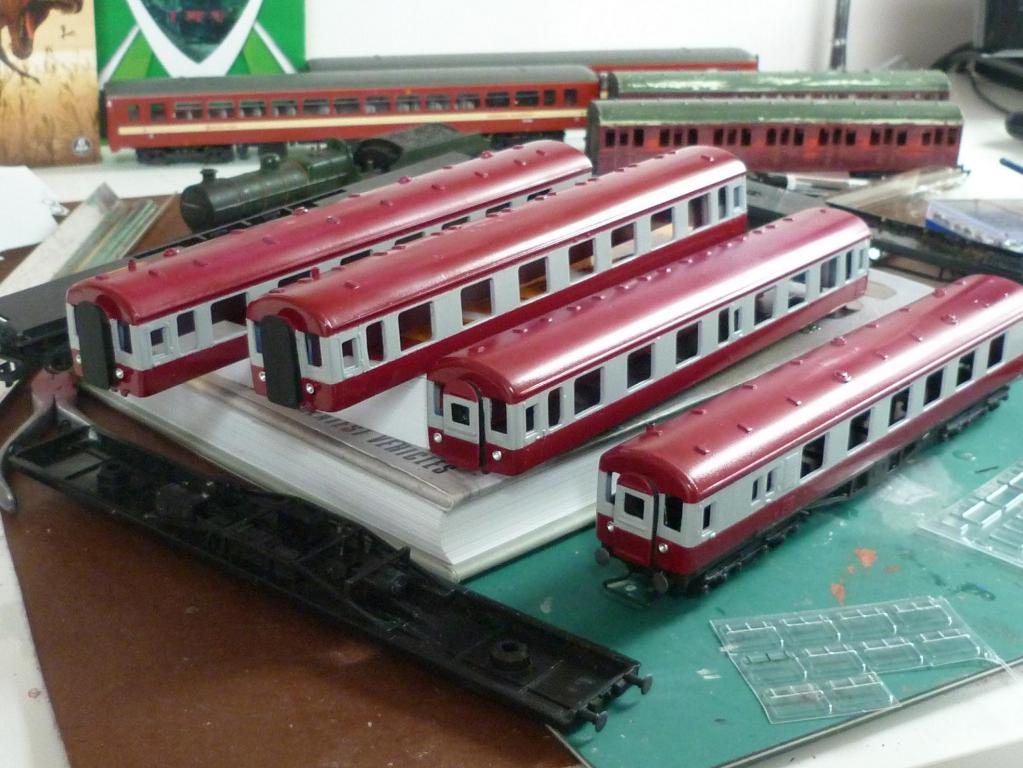
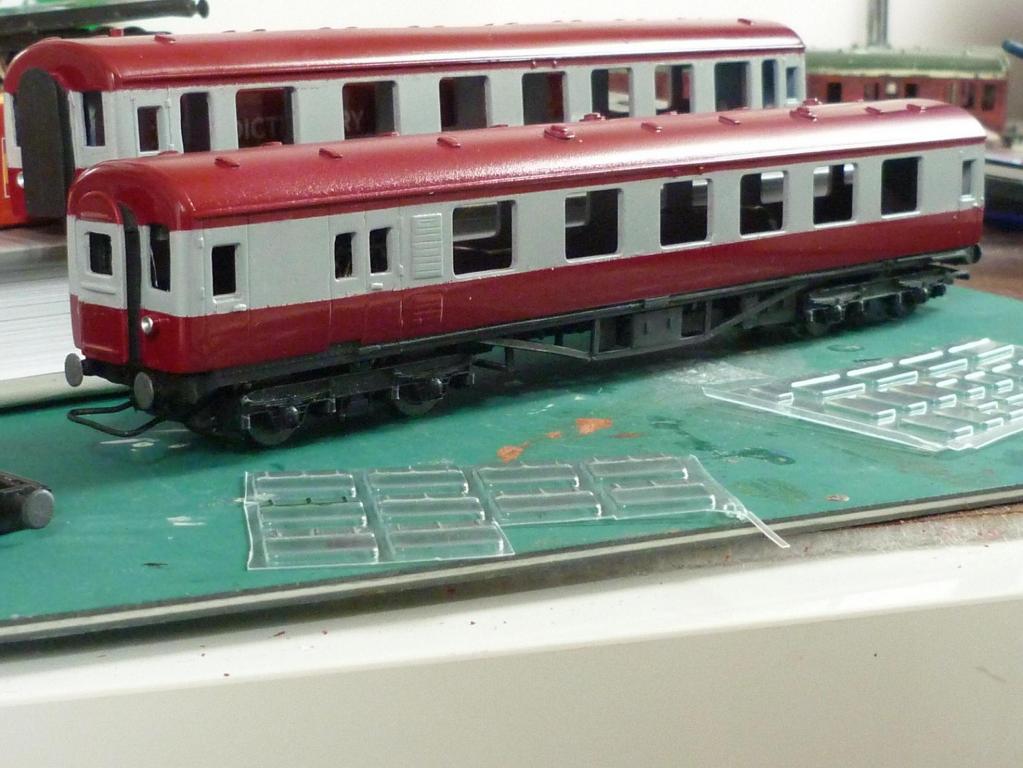
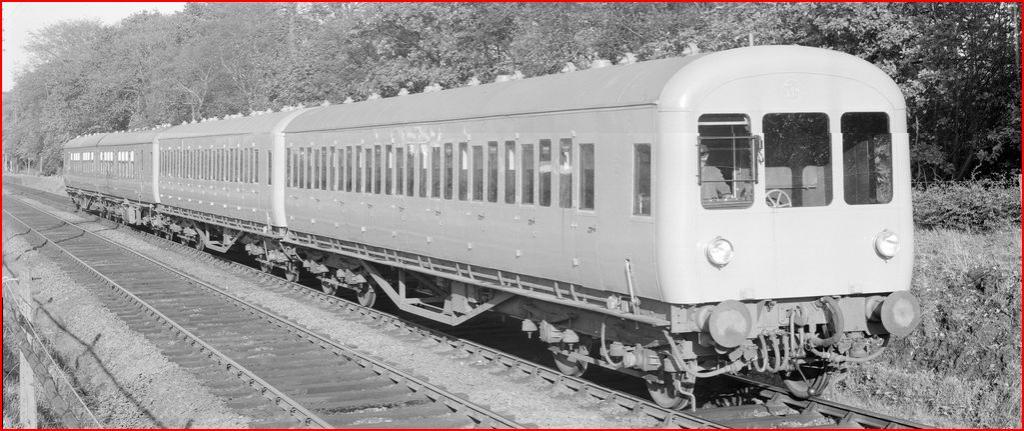
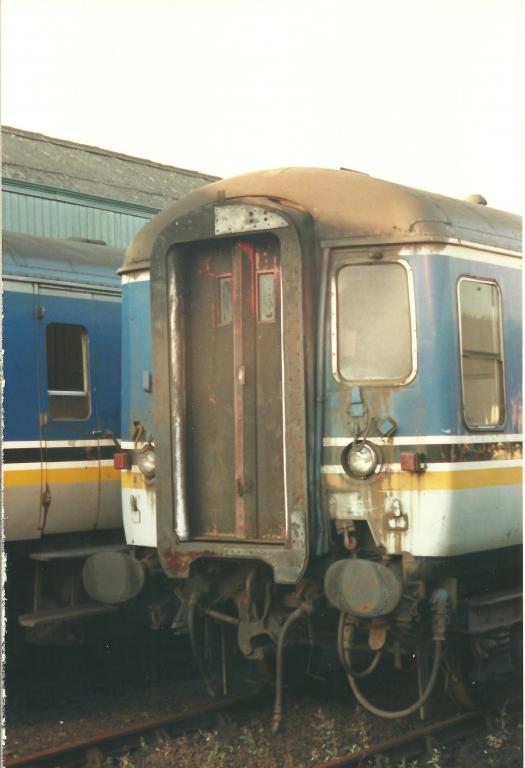
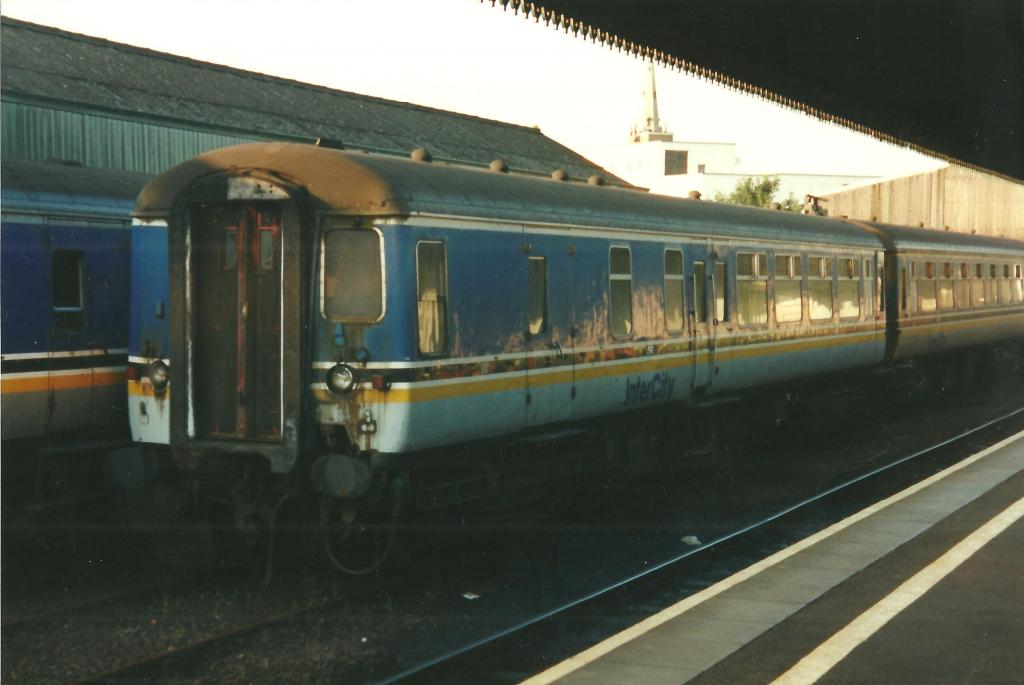
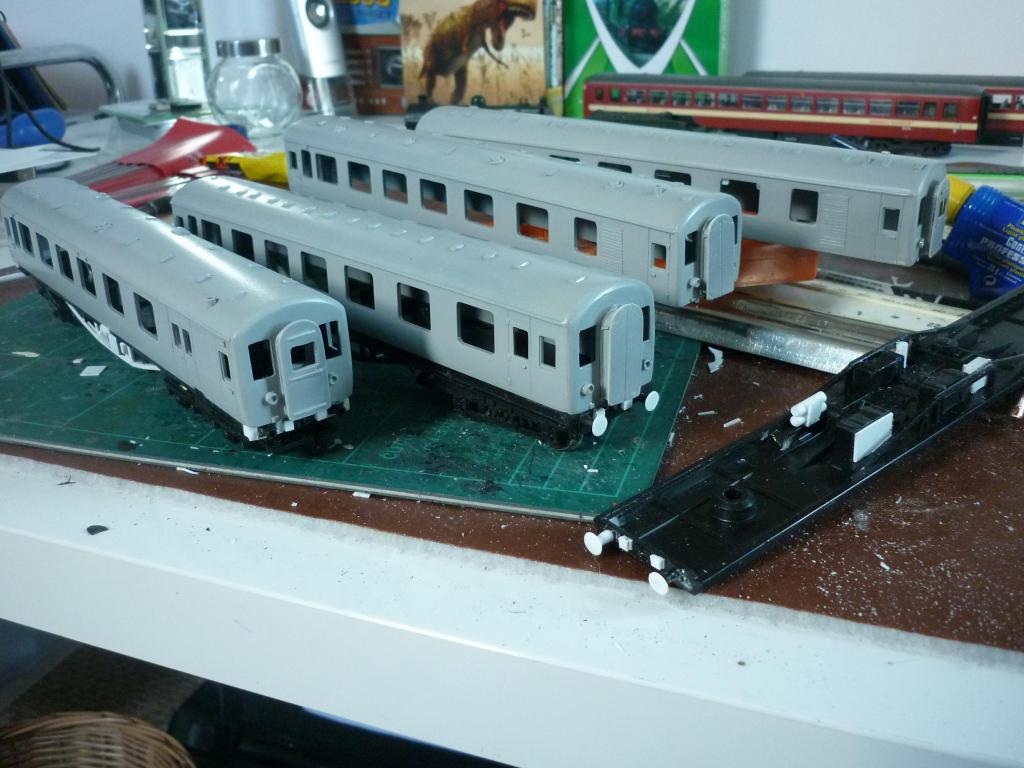
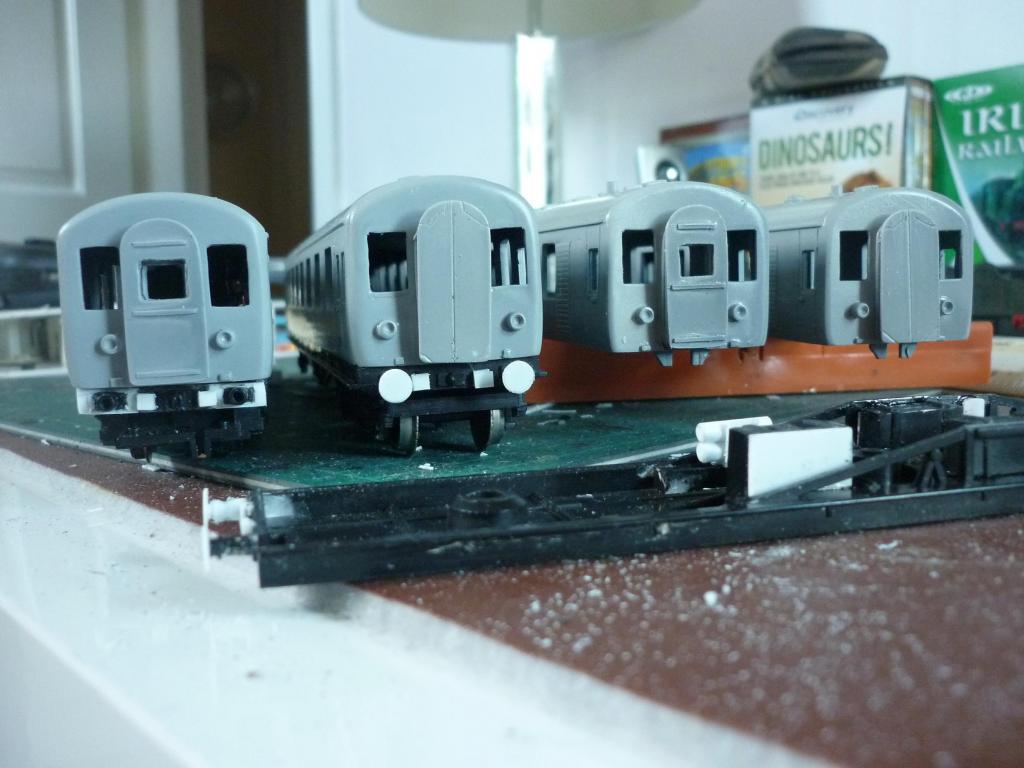
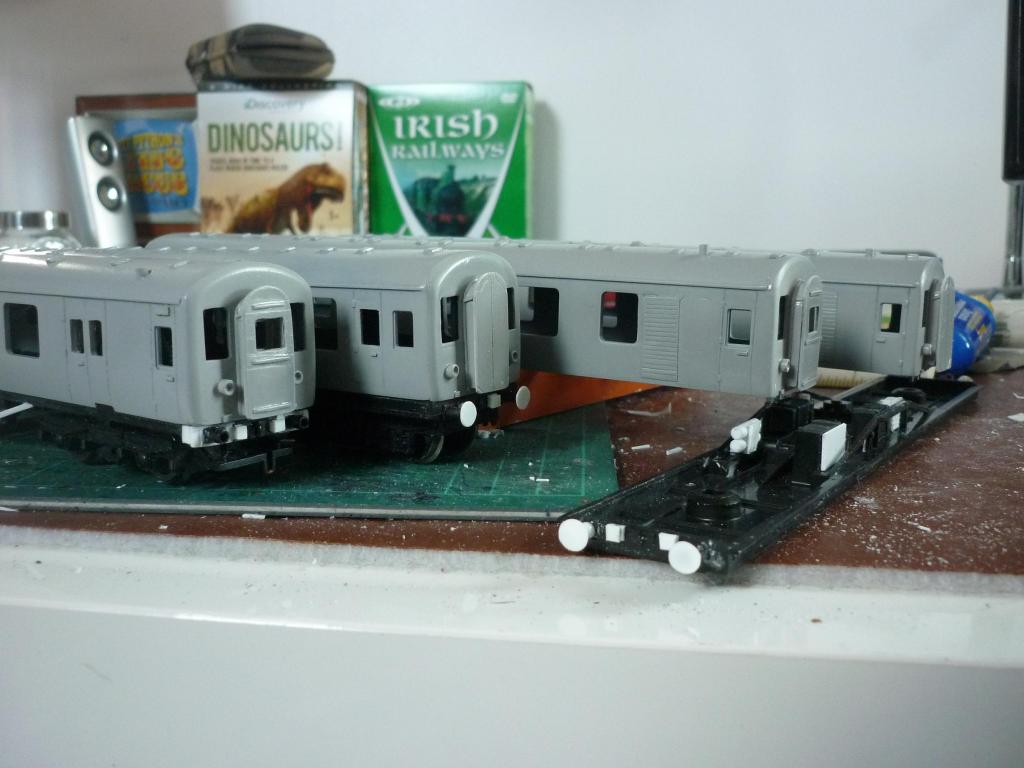

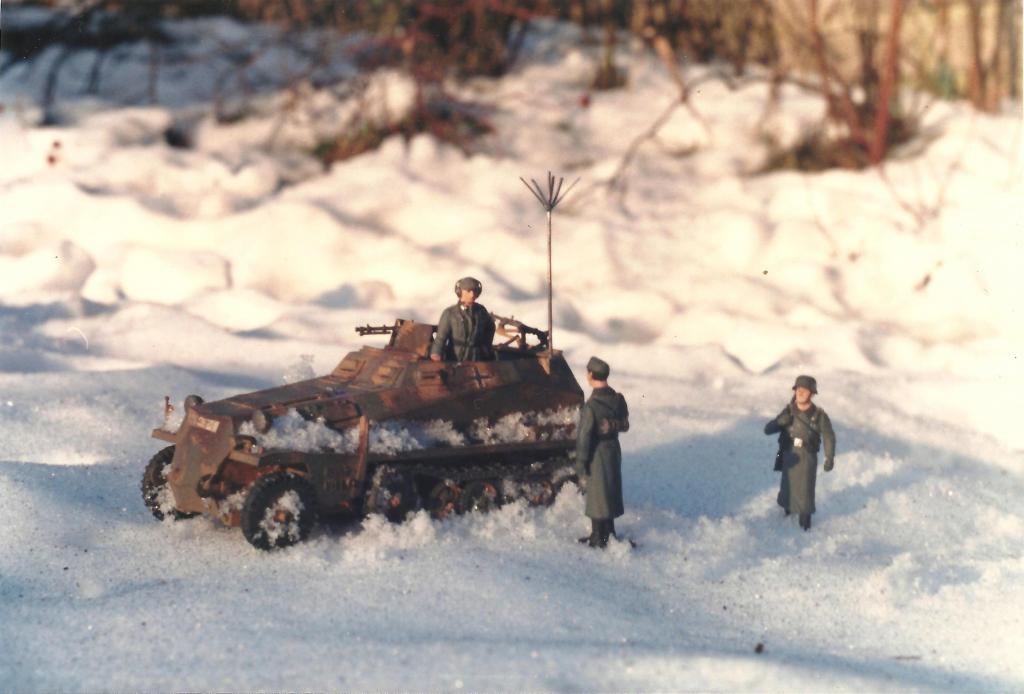
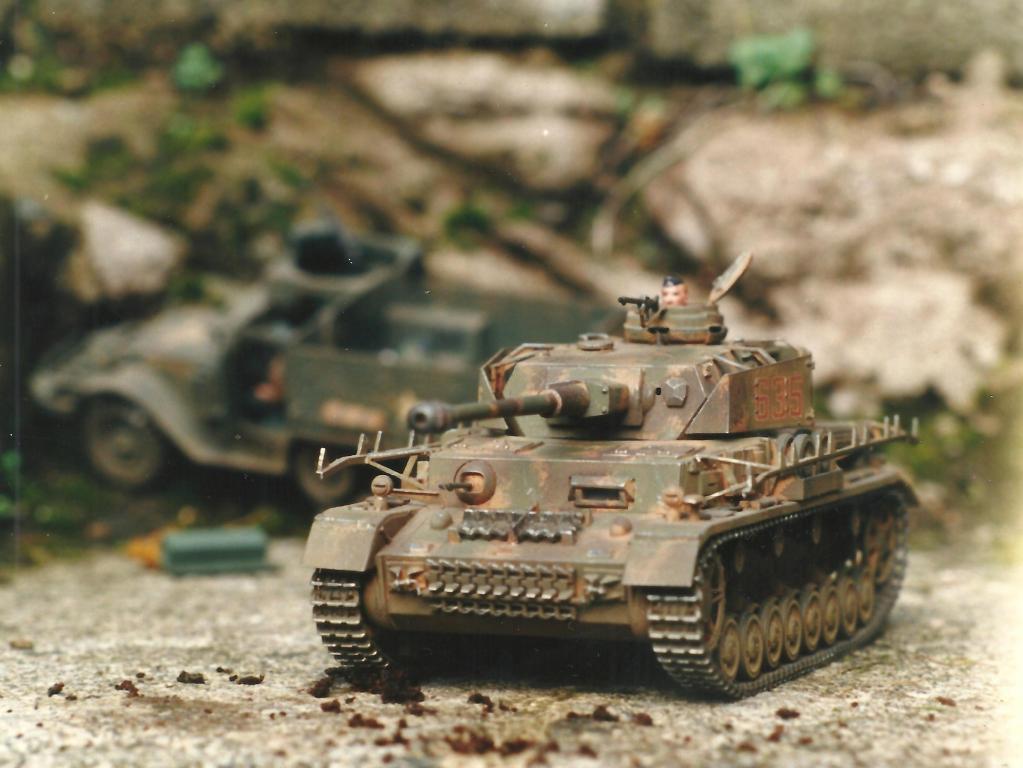
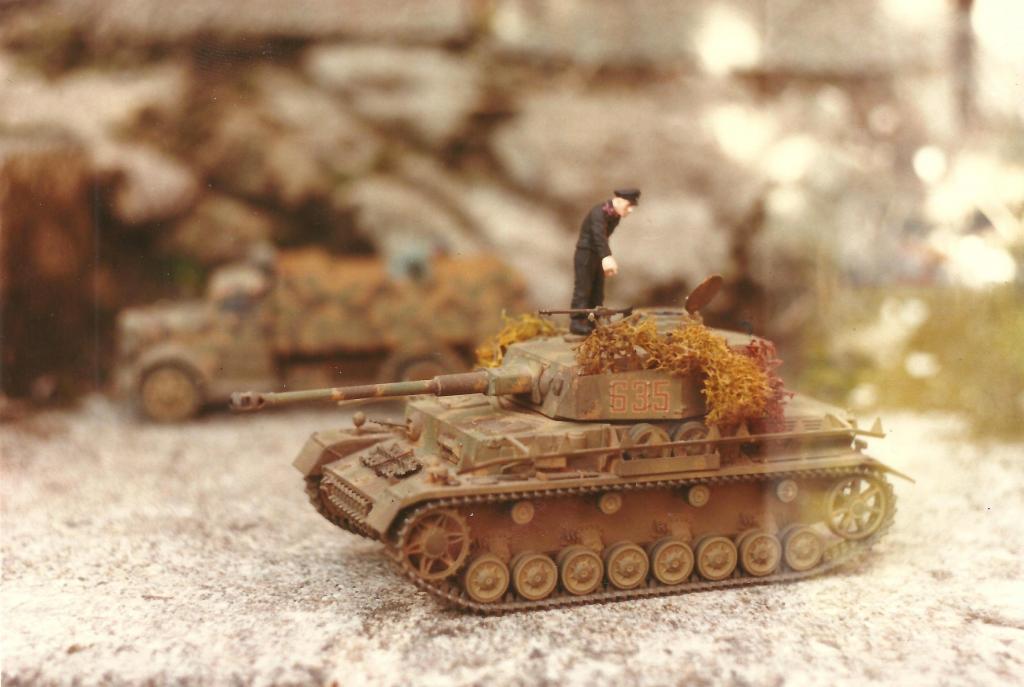
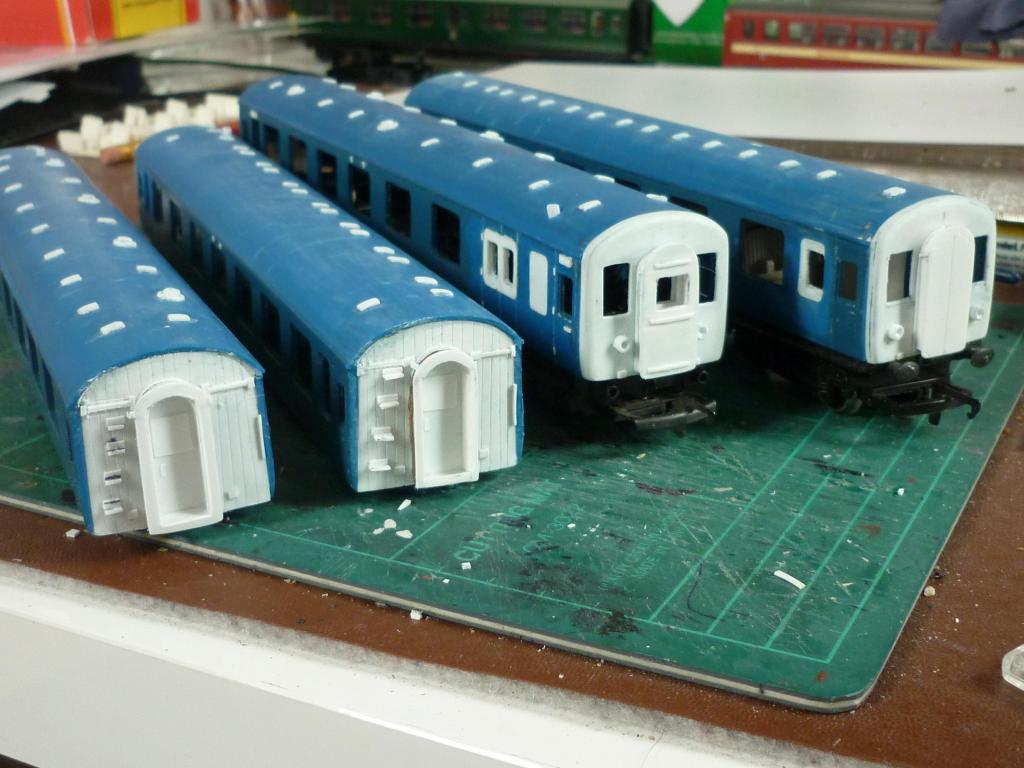
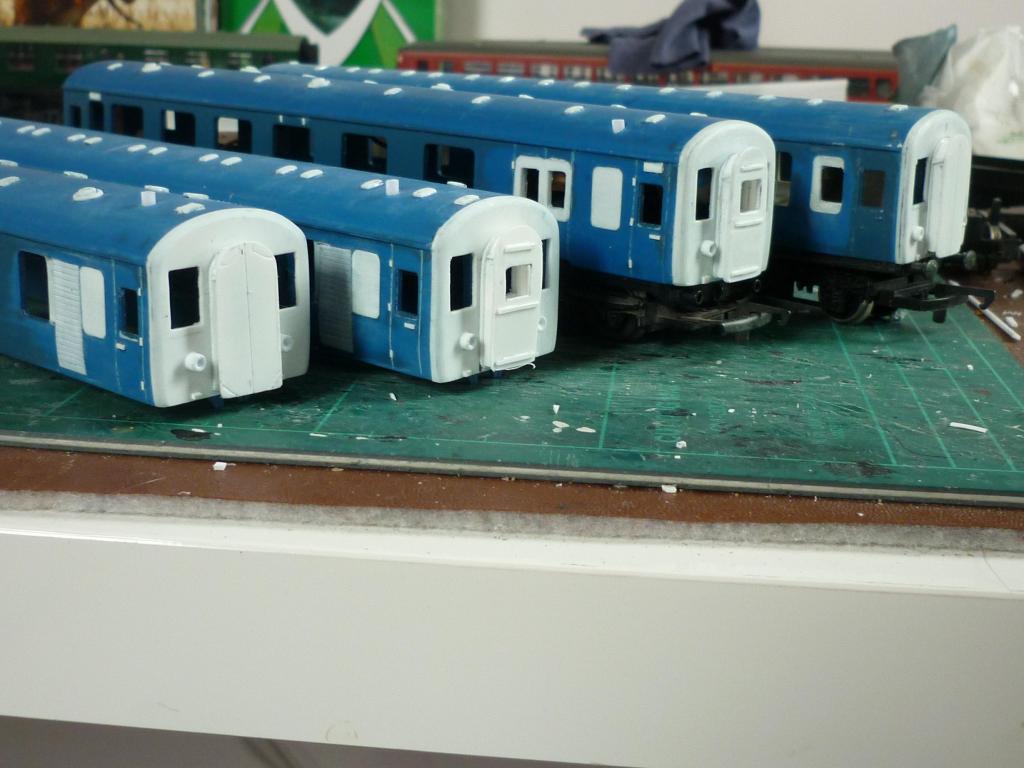
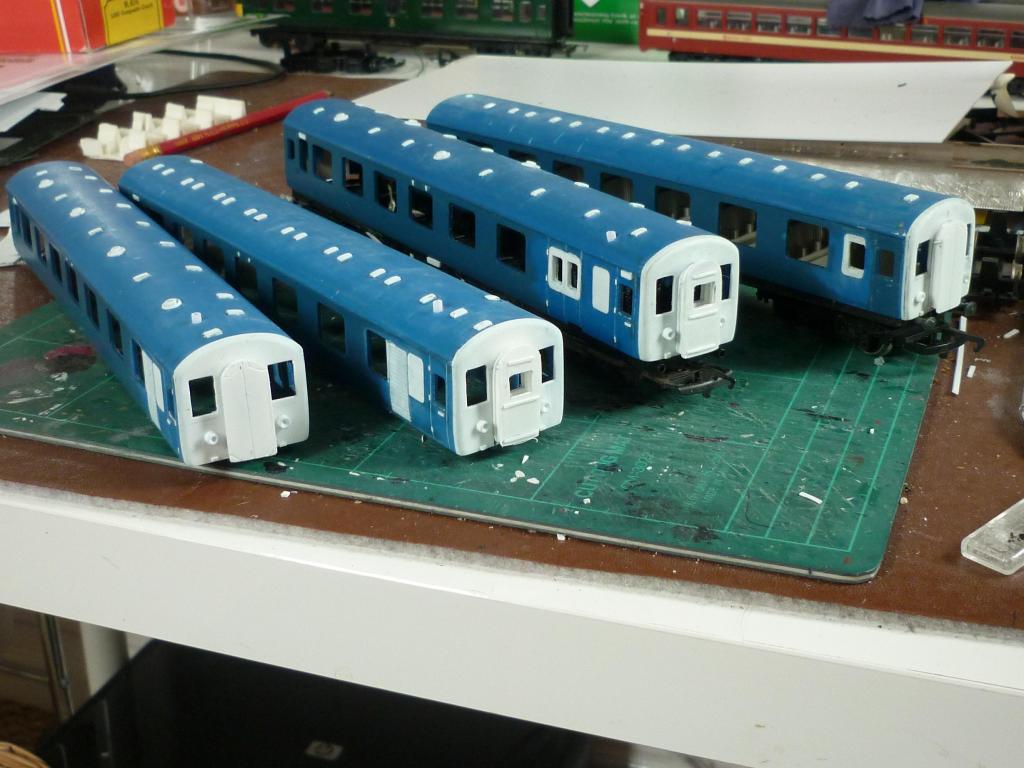

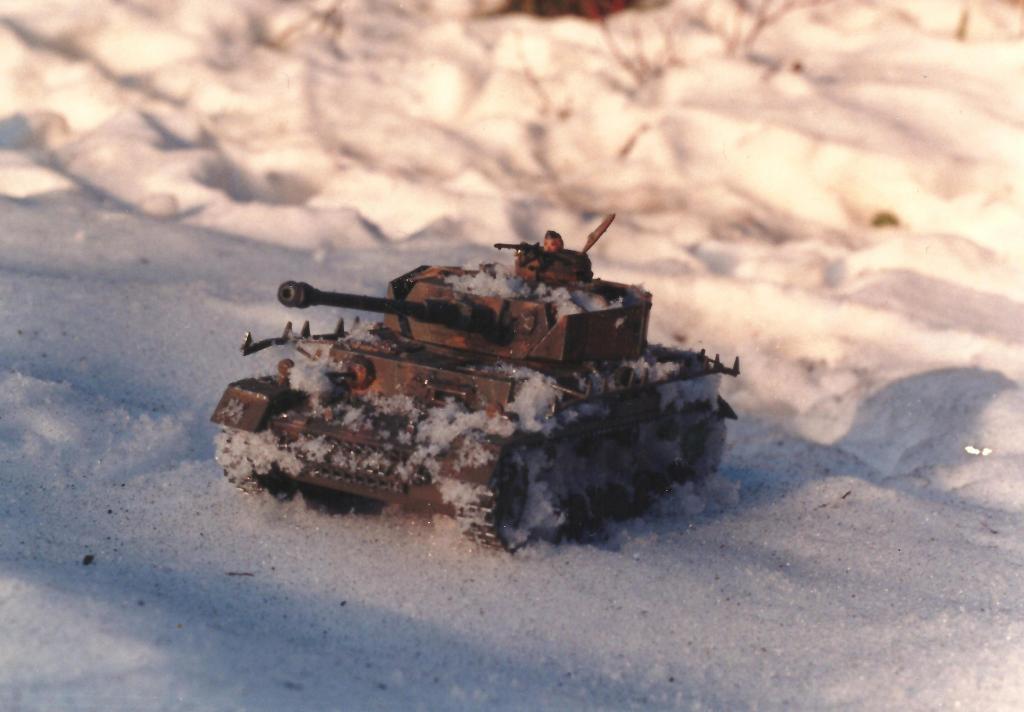
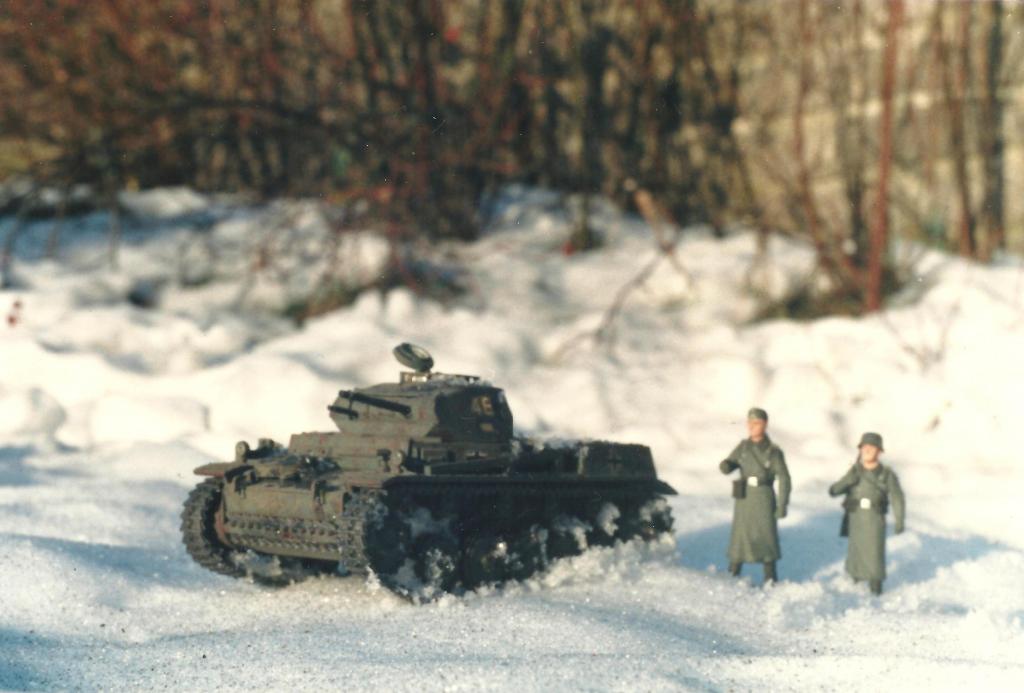
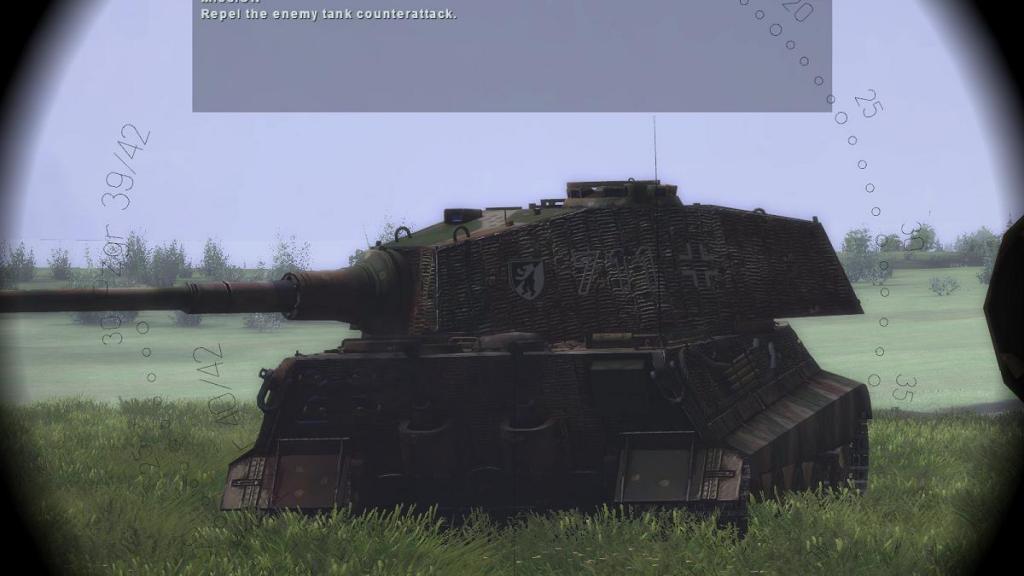
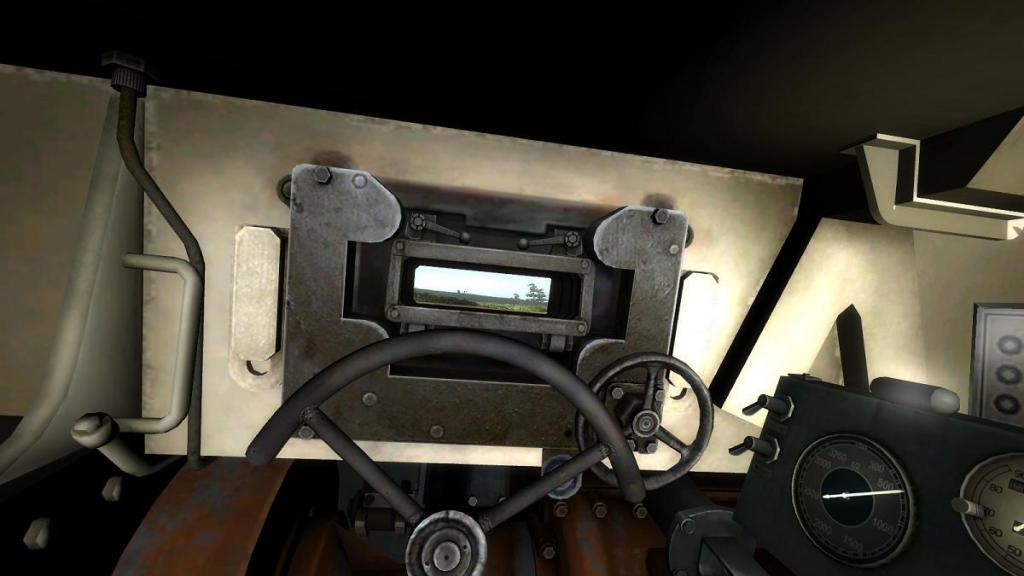

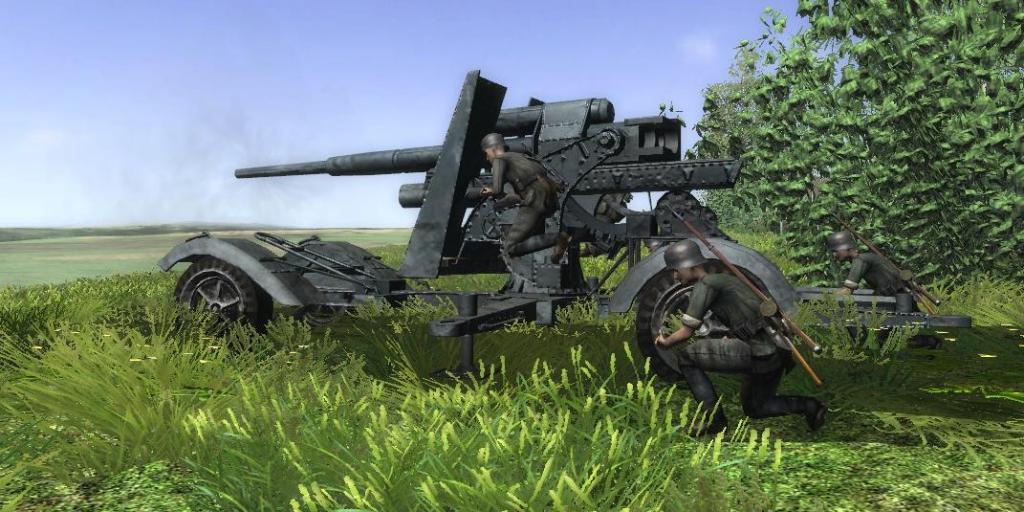
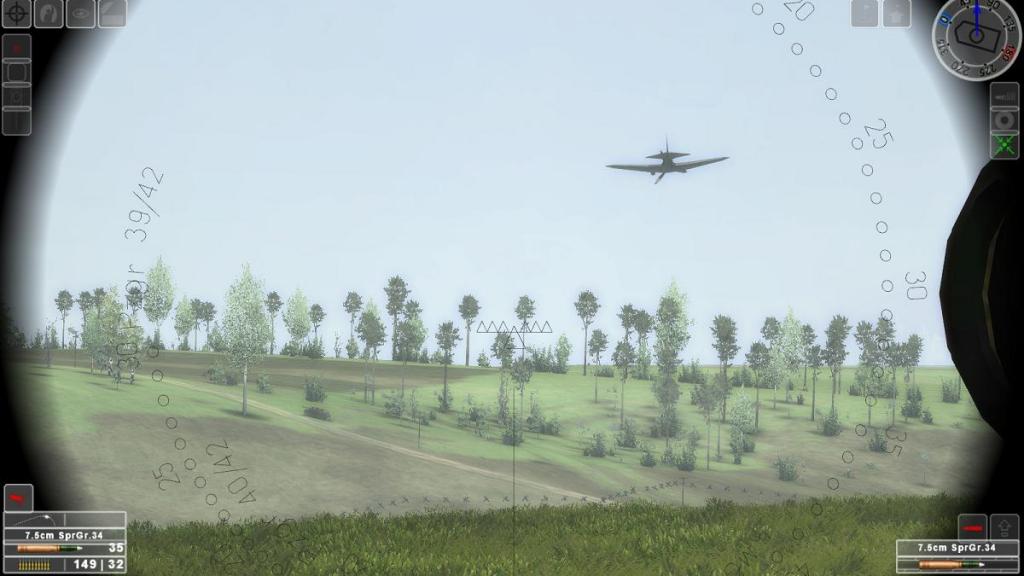
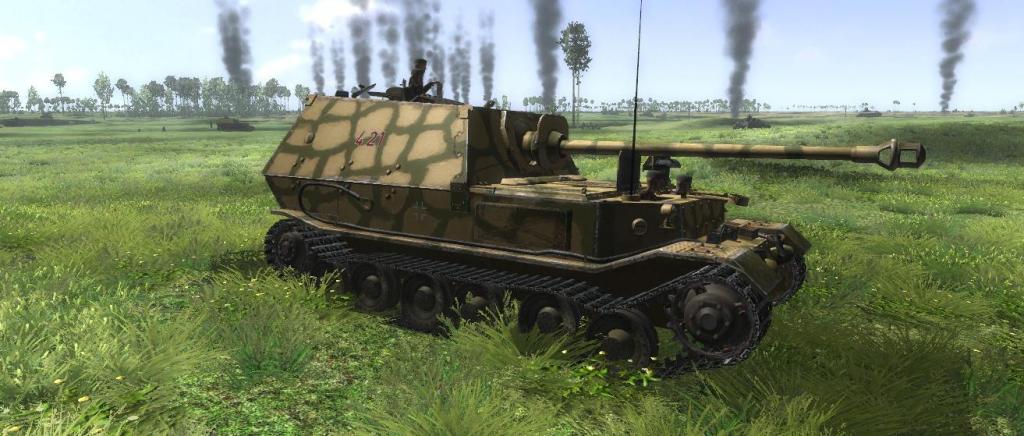
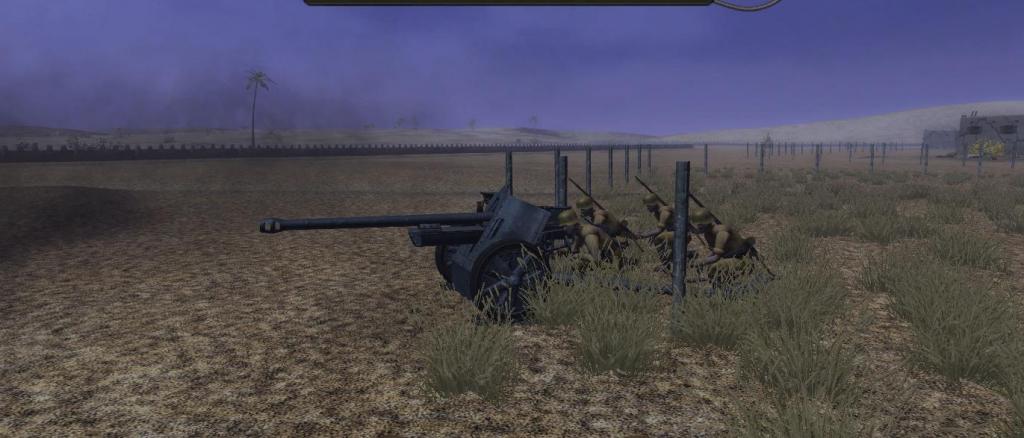
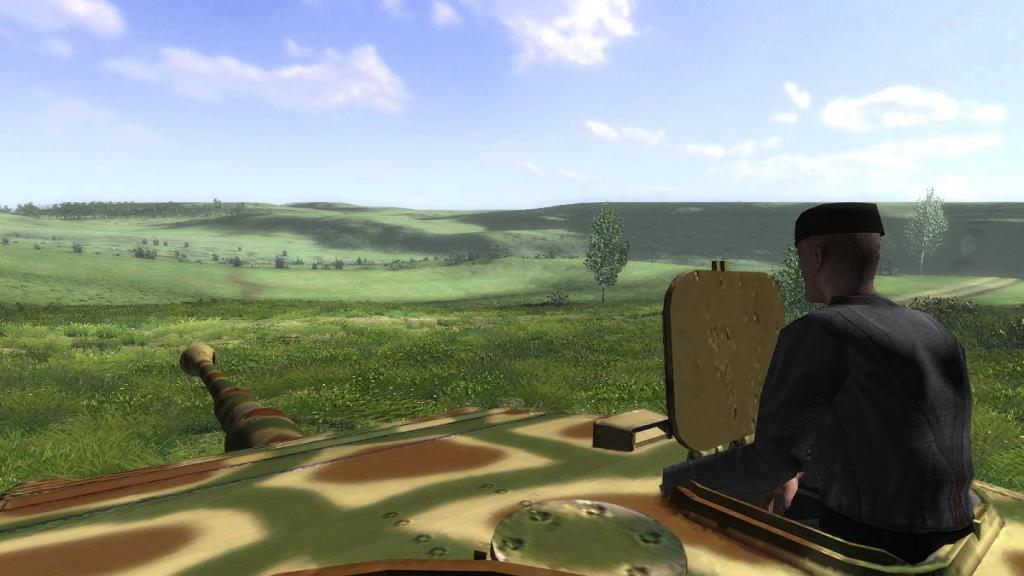
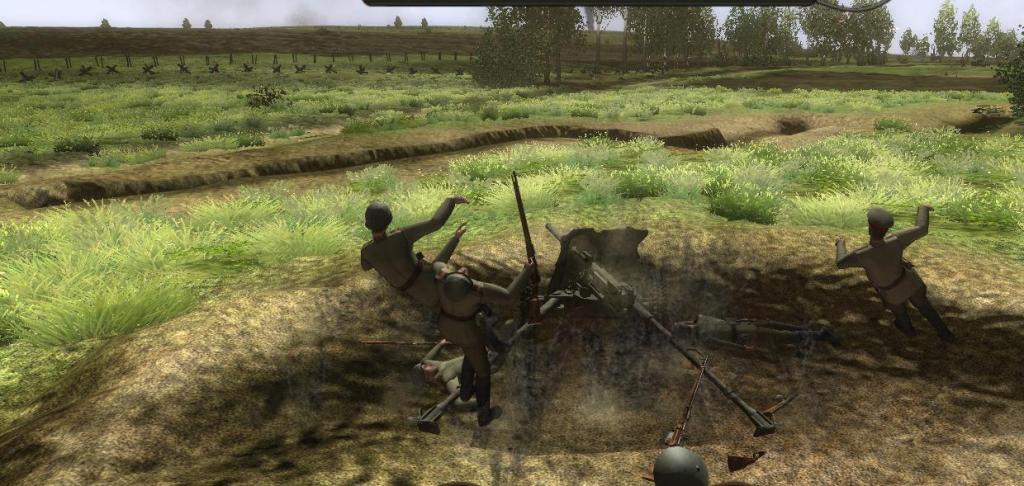
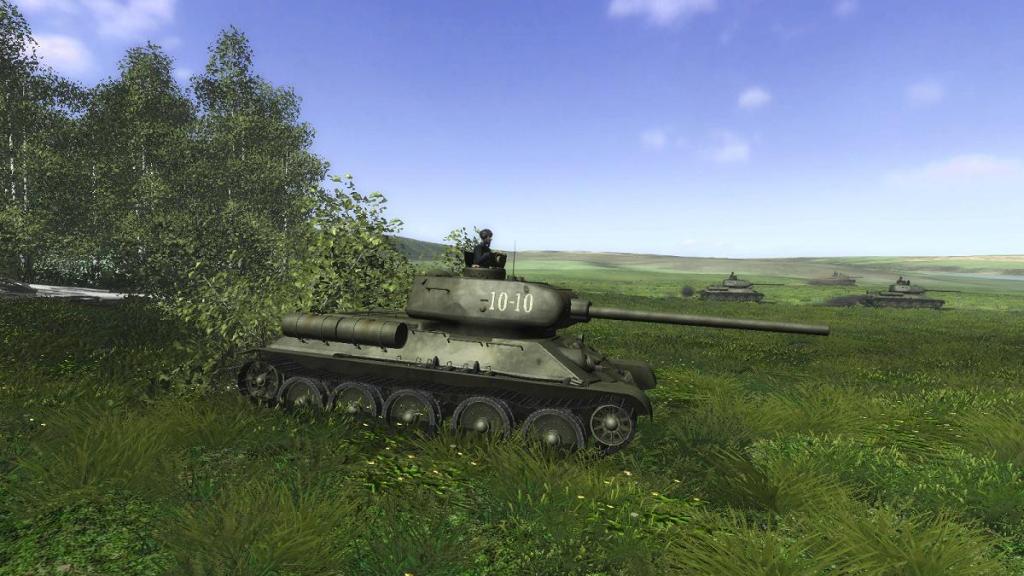
.jpg.e2d5a4cf63c2ea8a75c2151201138976.jpg)
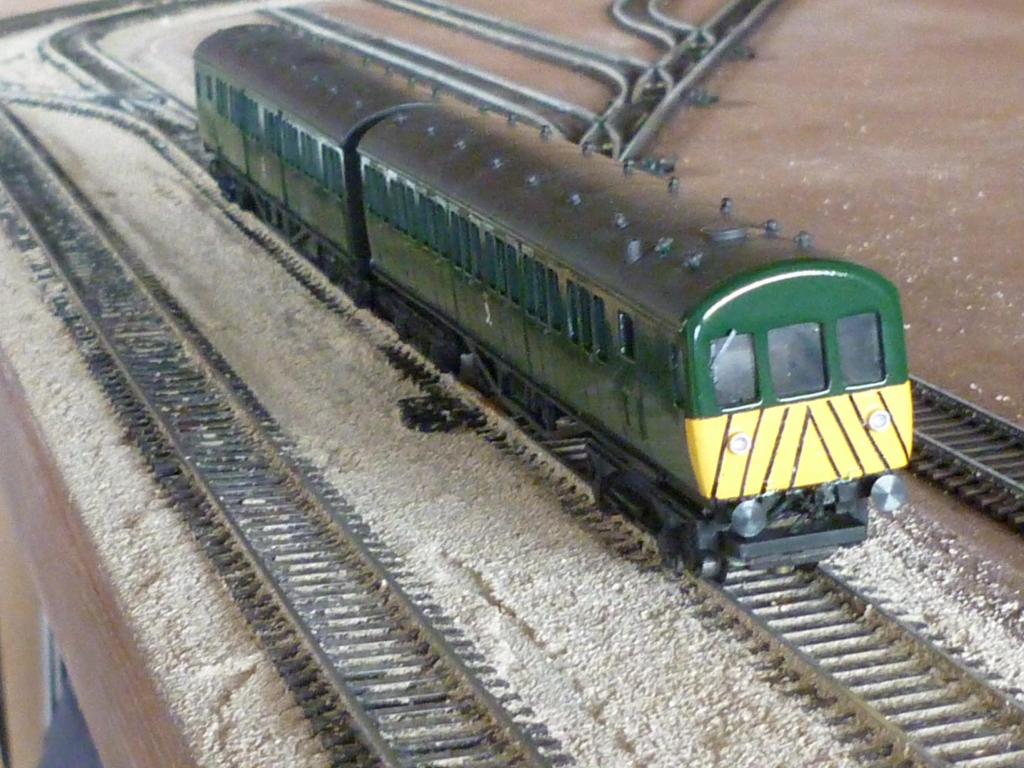

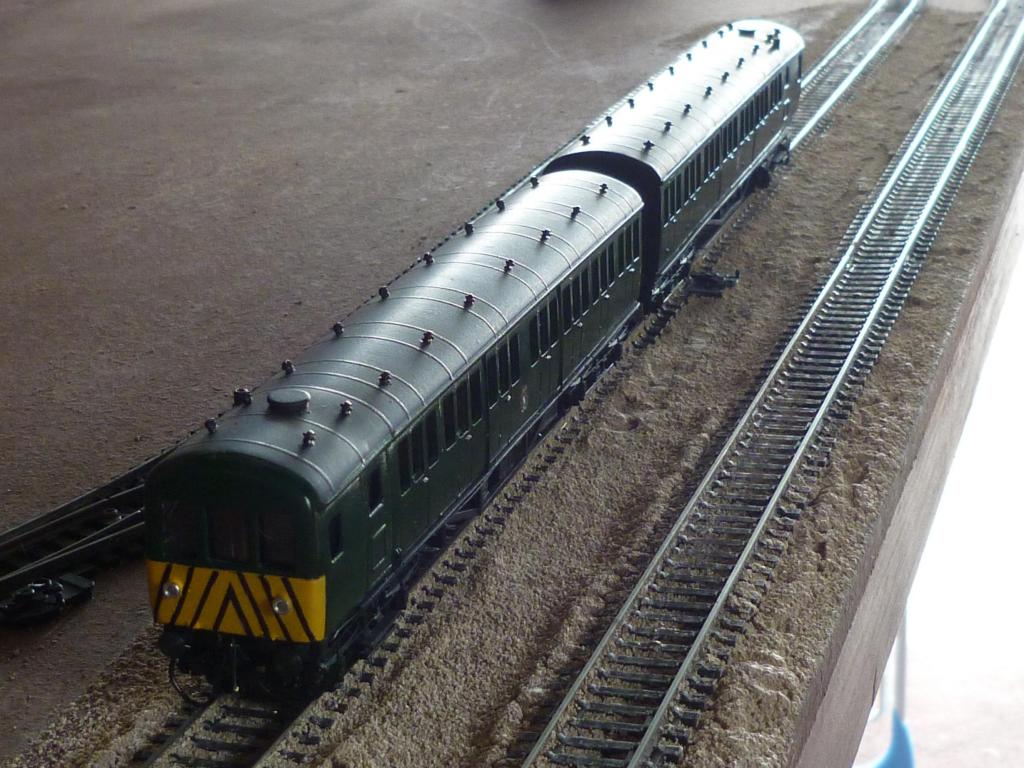
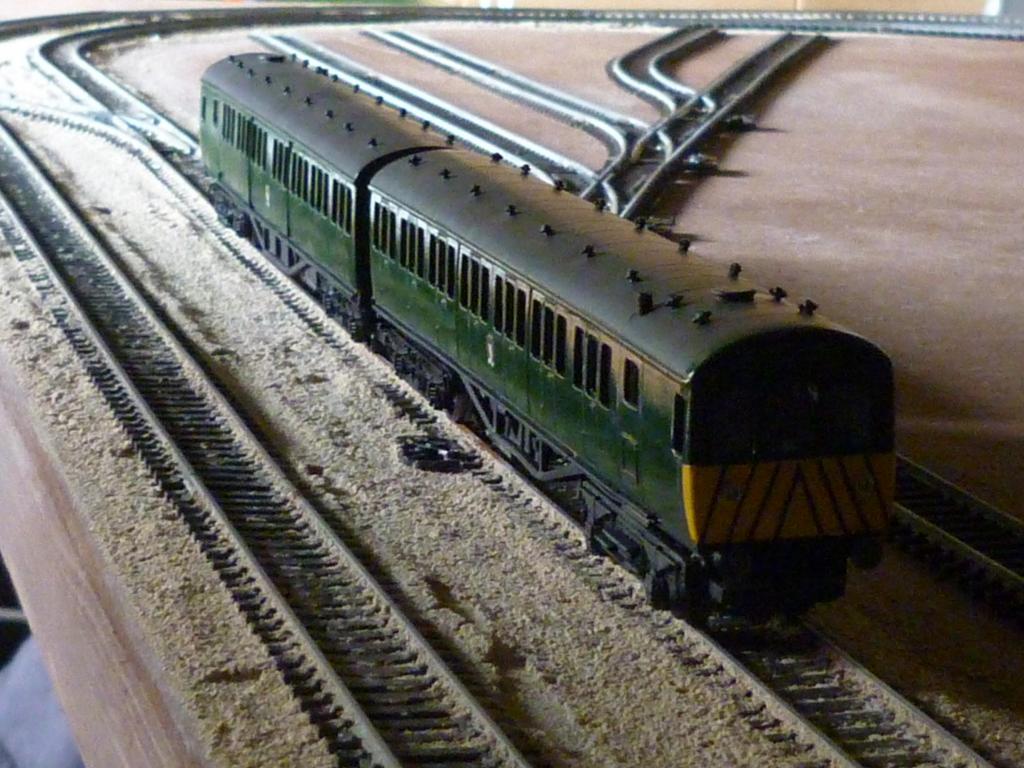

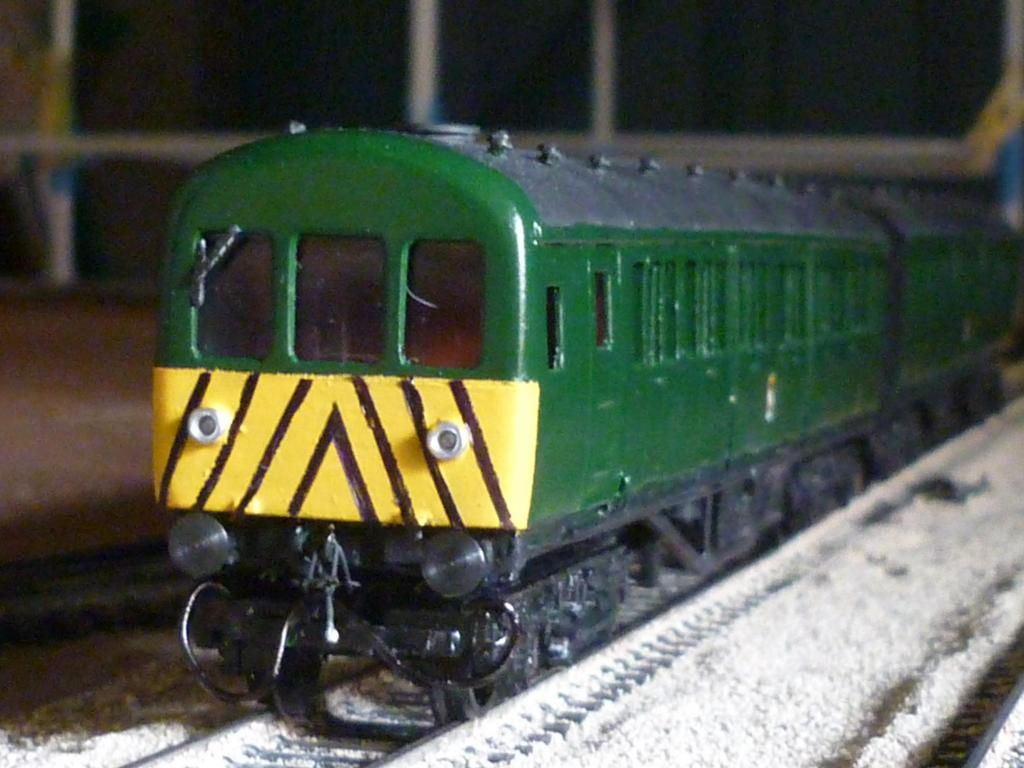
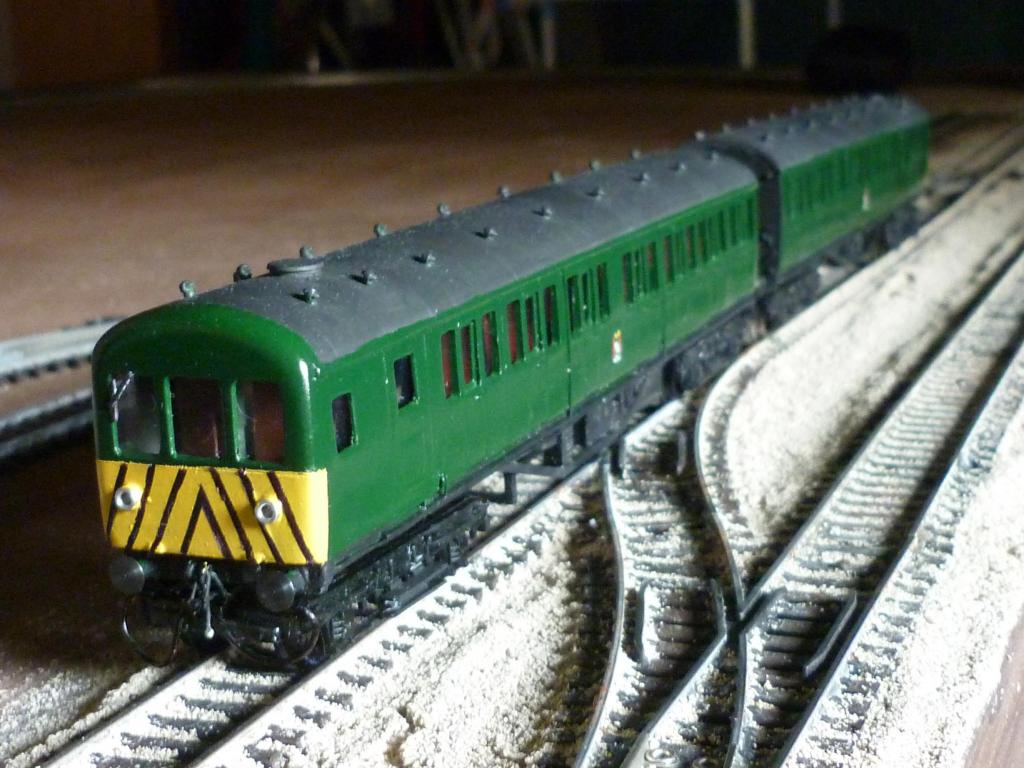
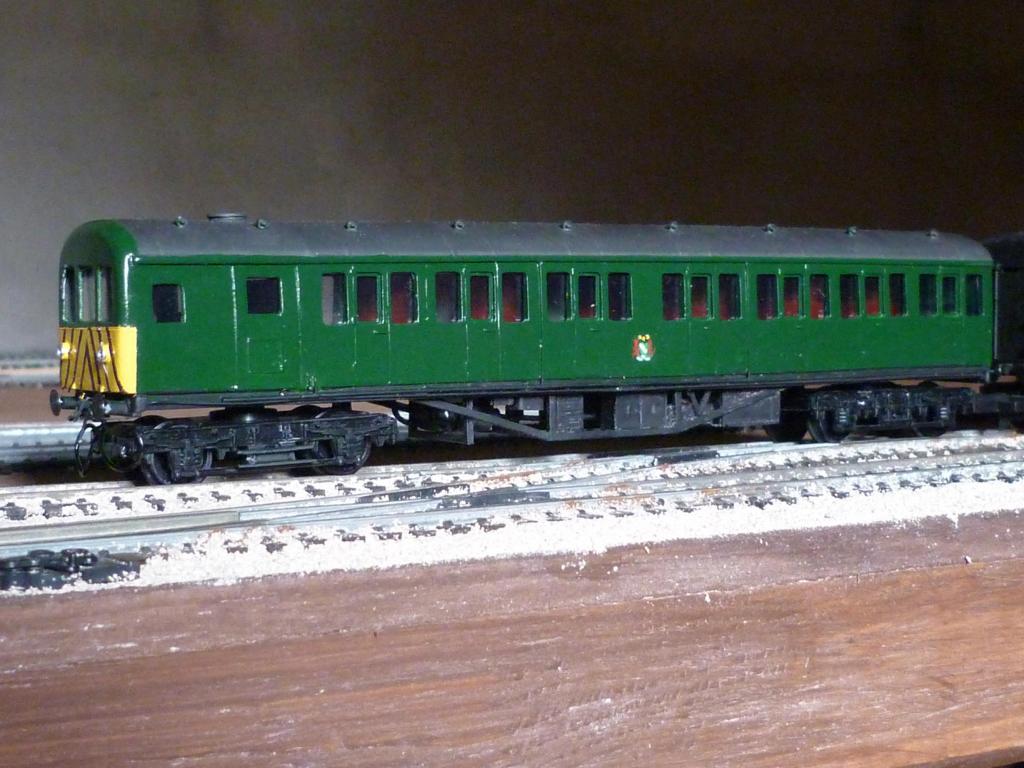
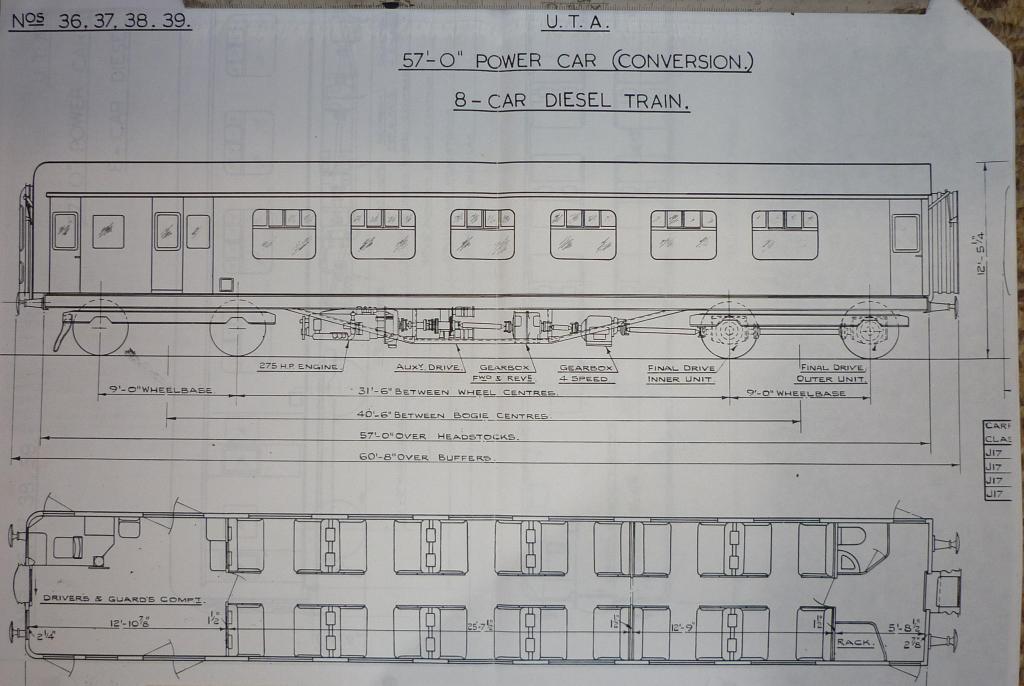
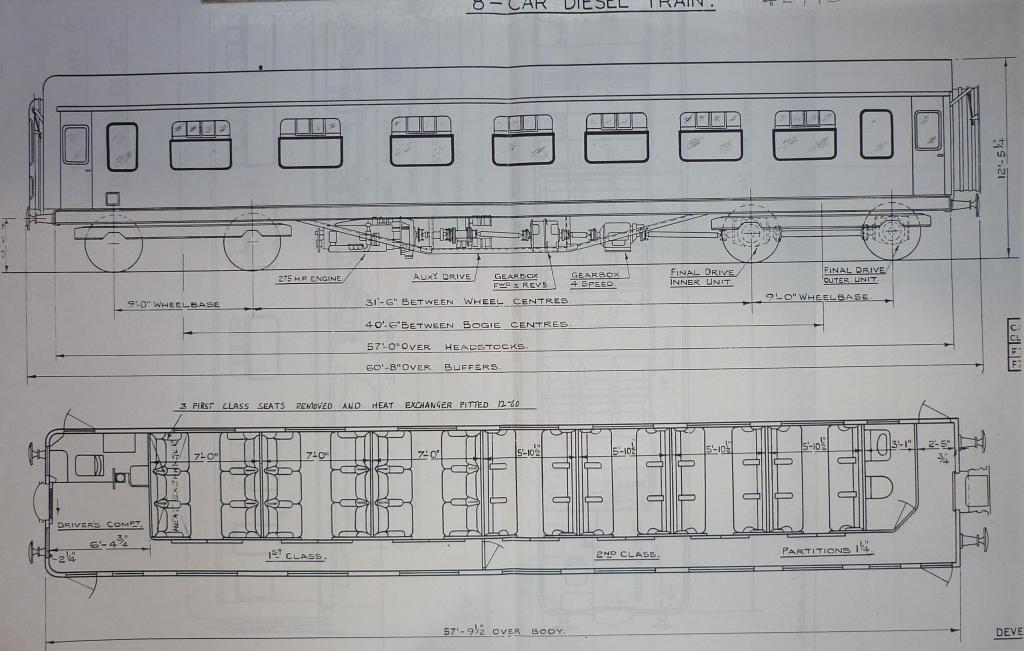
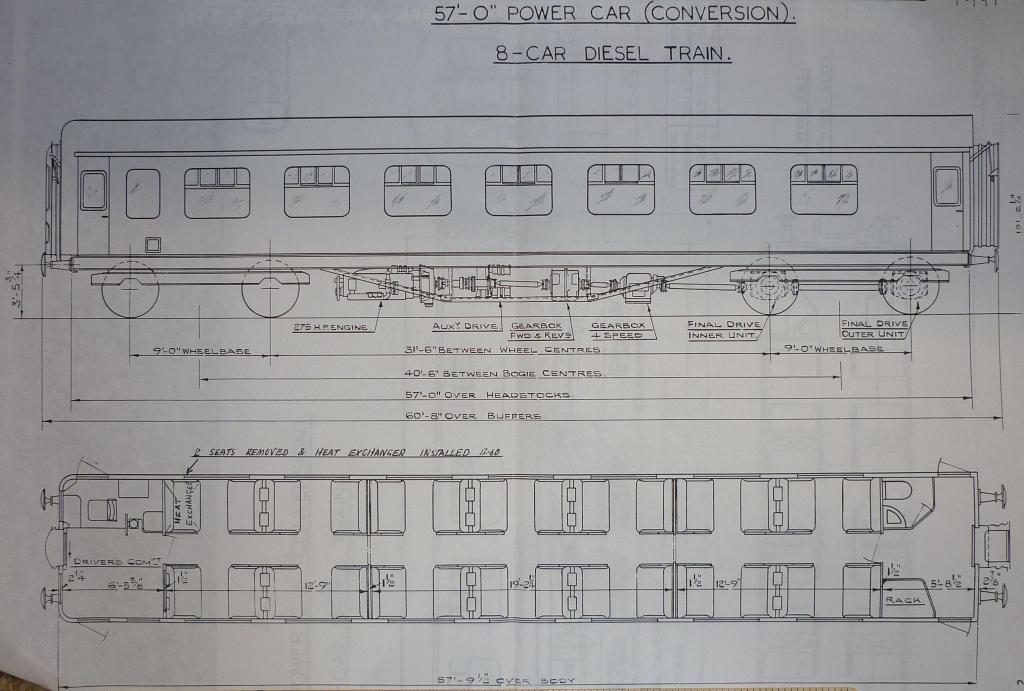
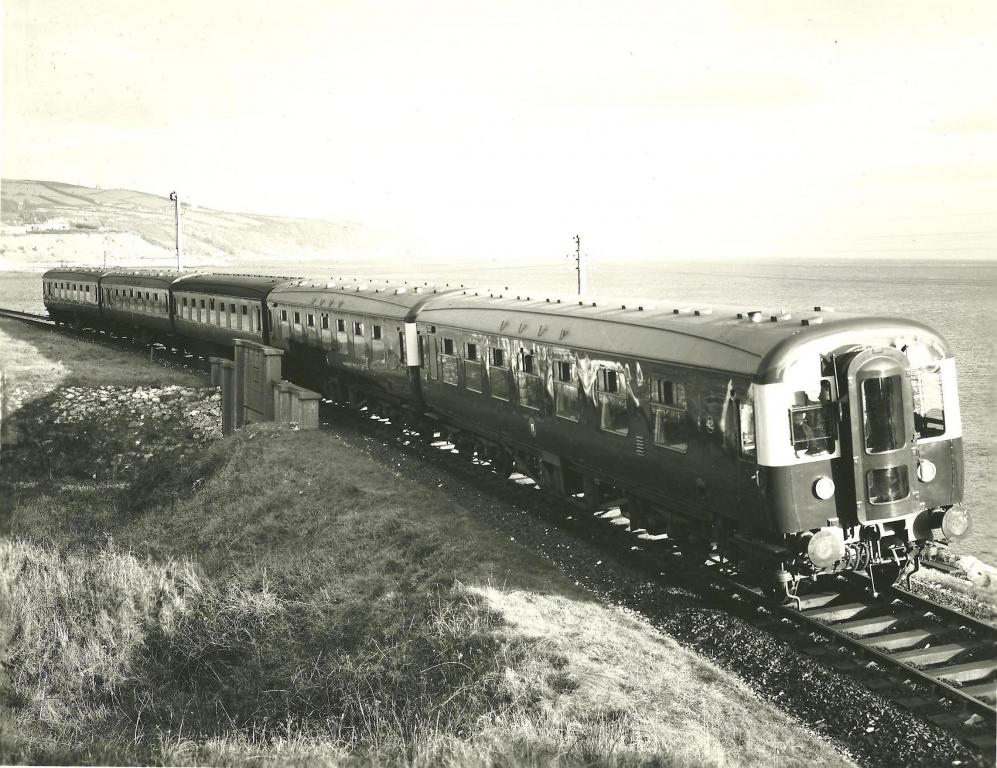
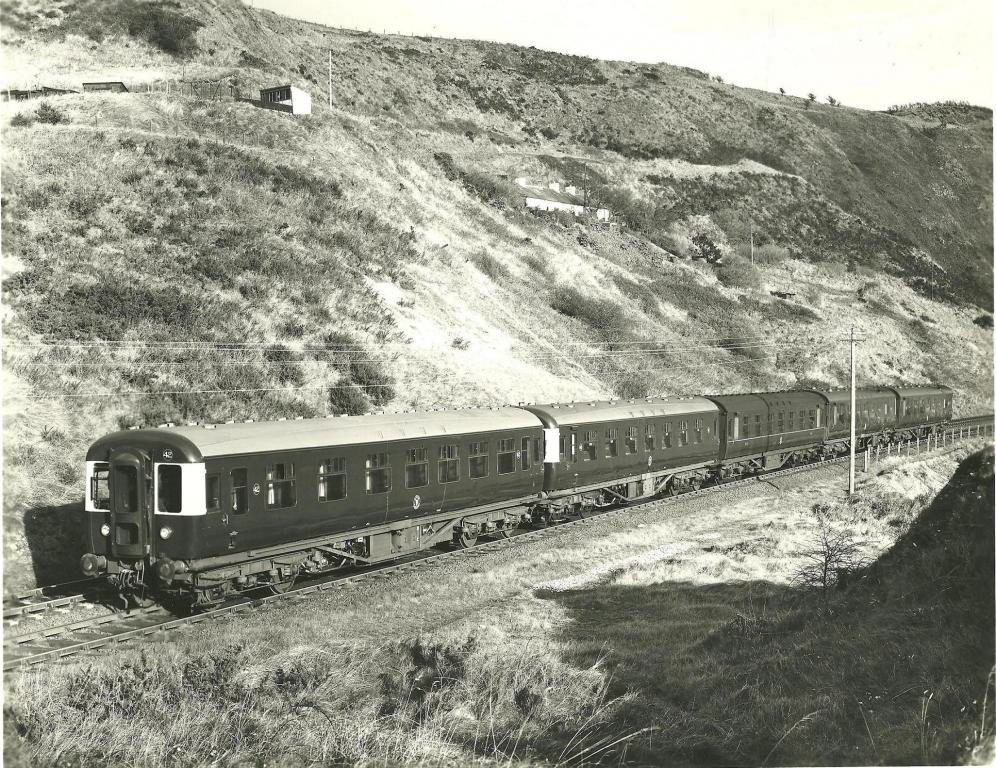
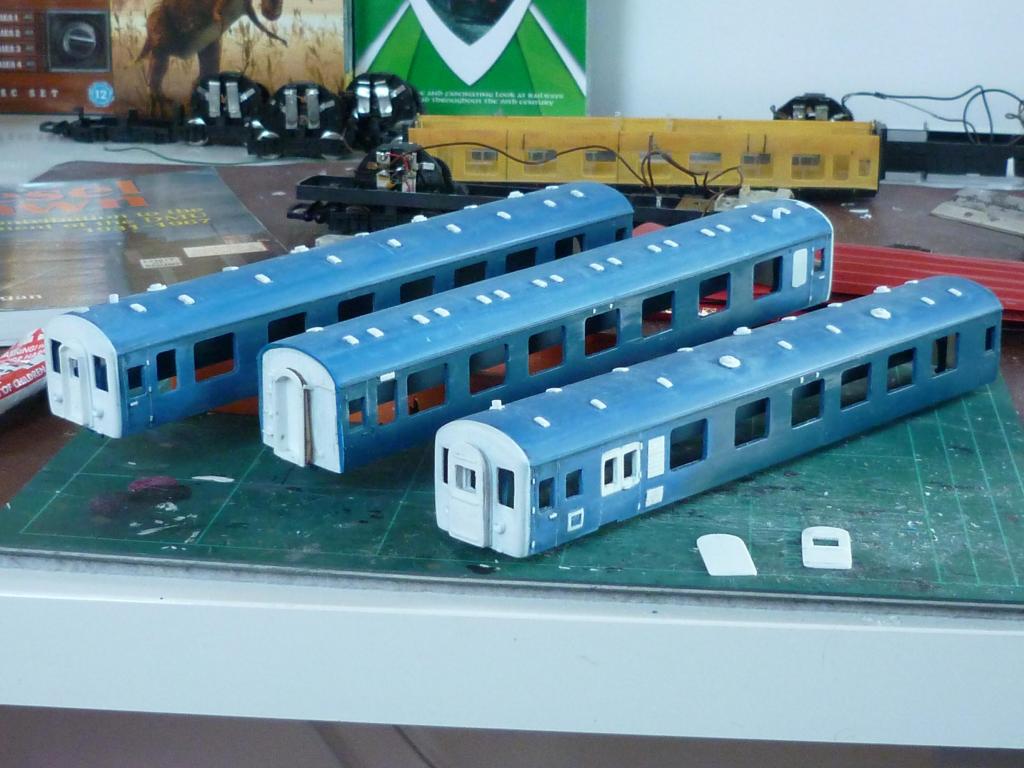

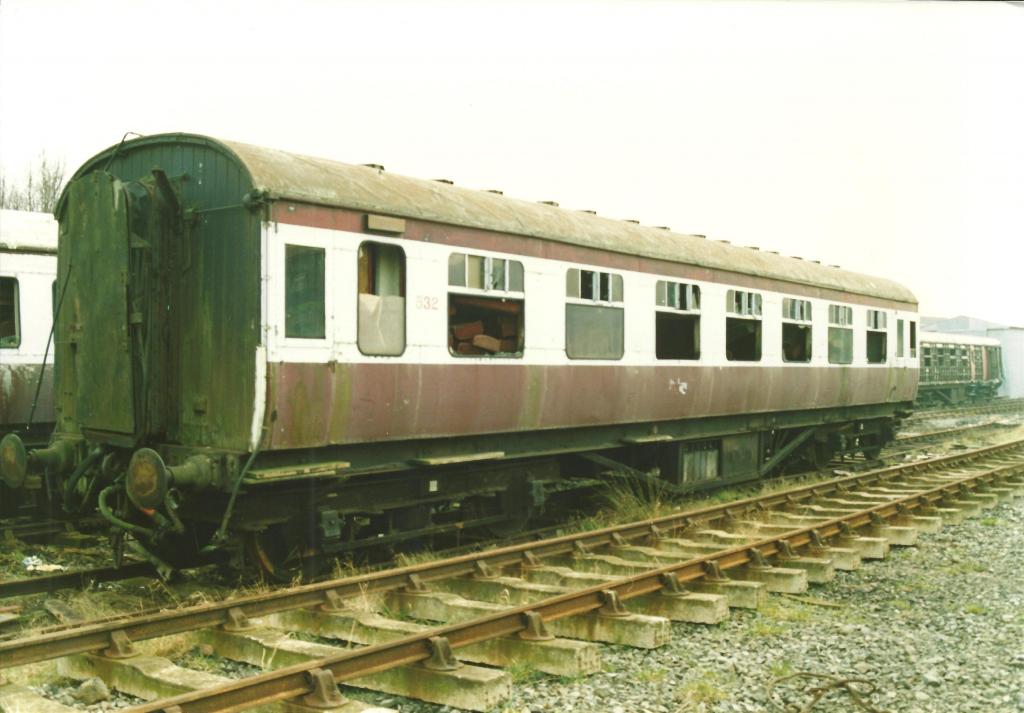
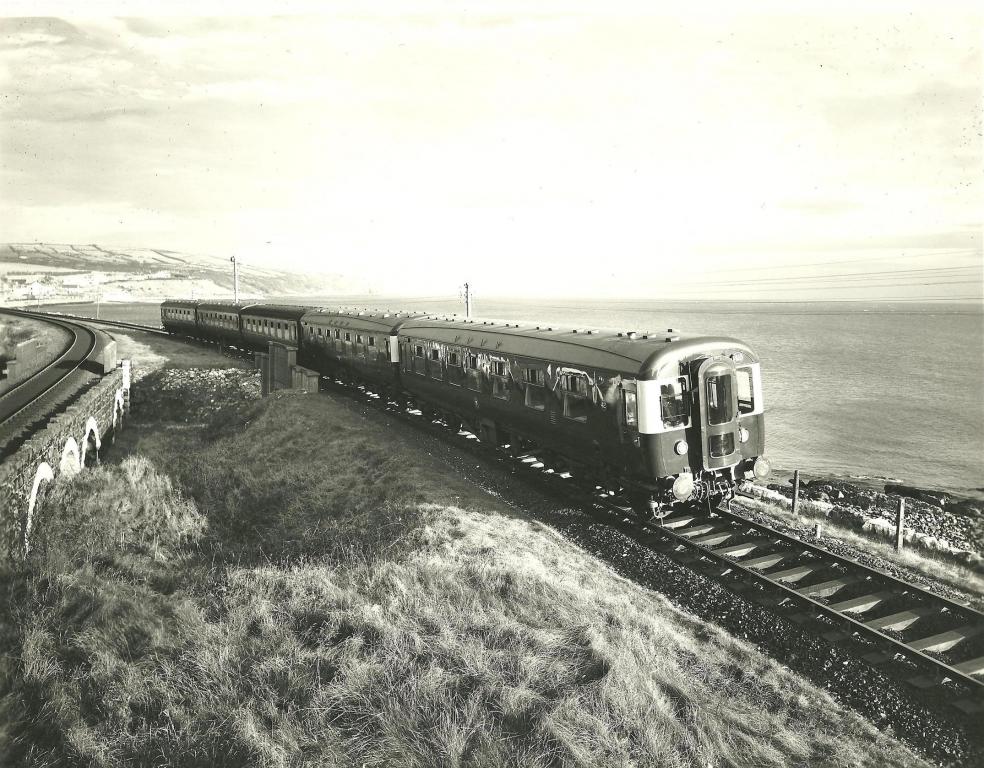


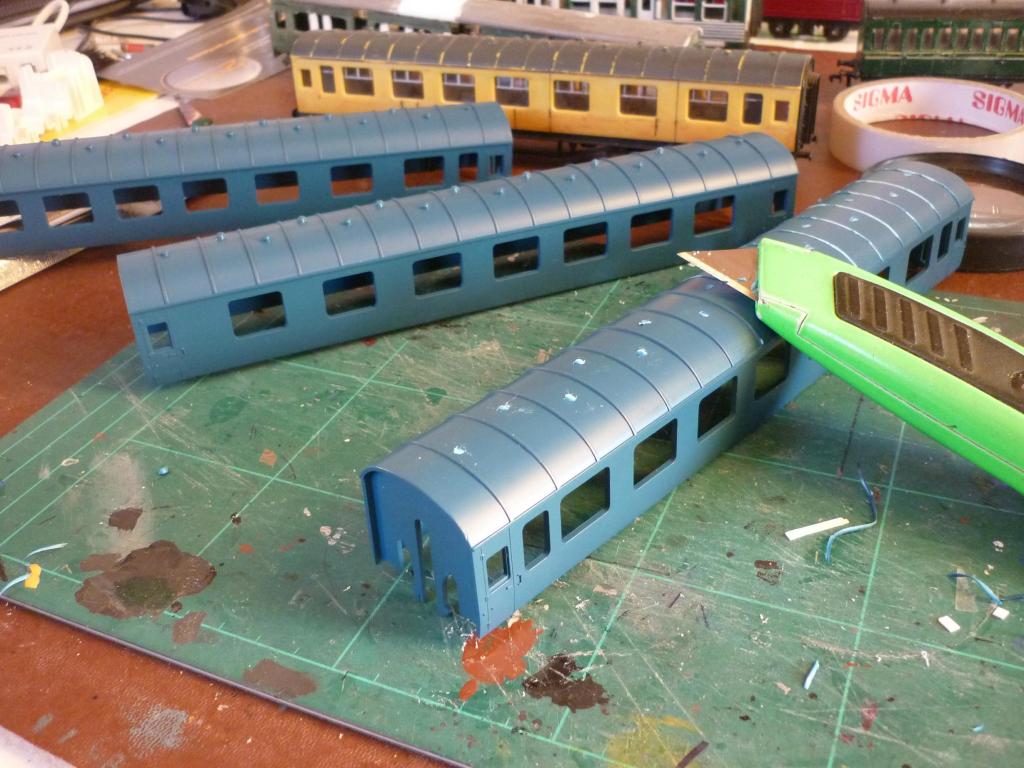
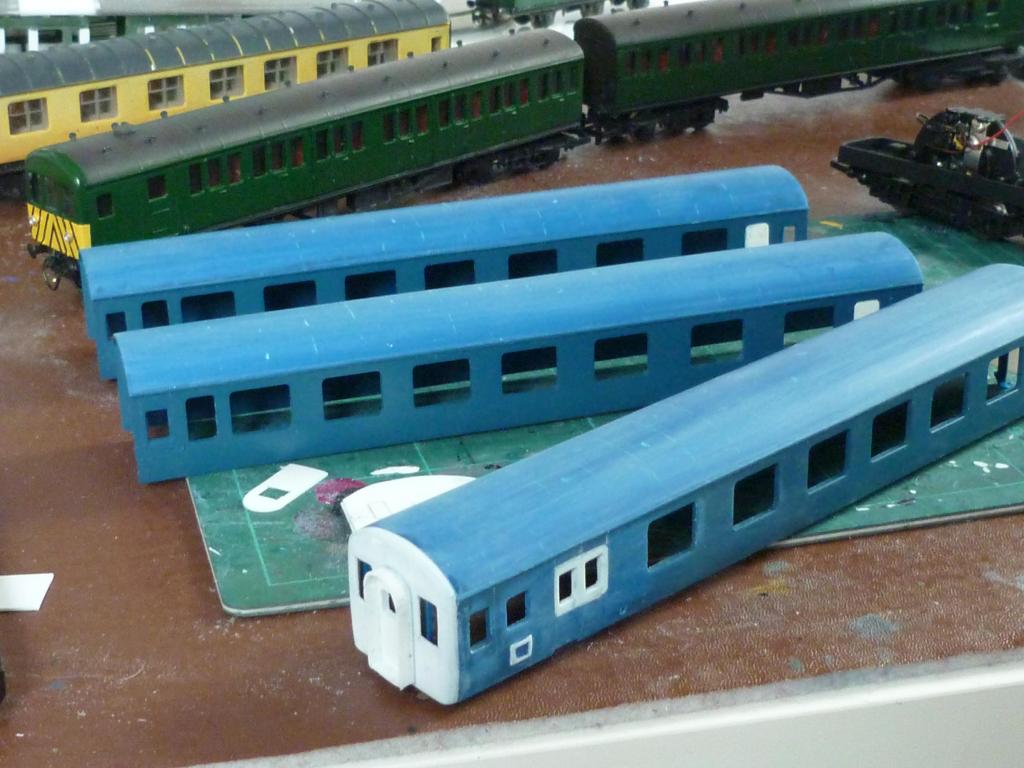
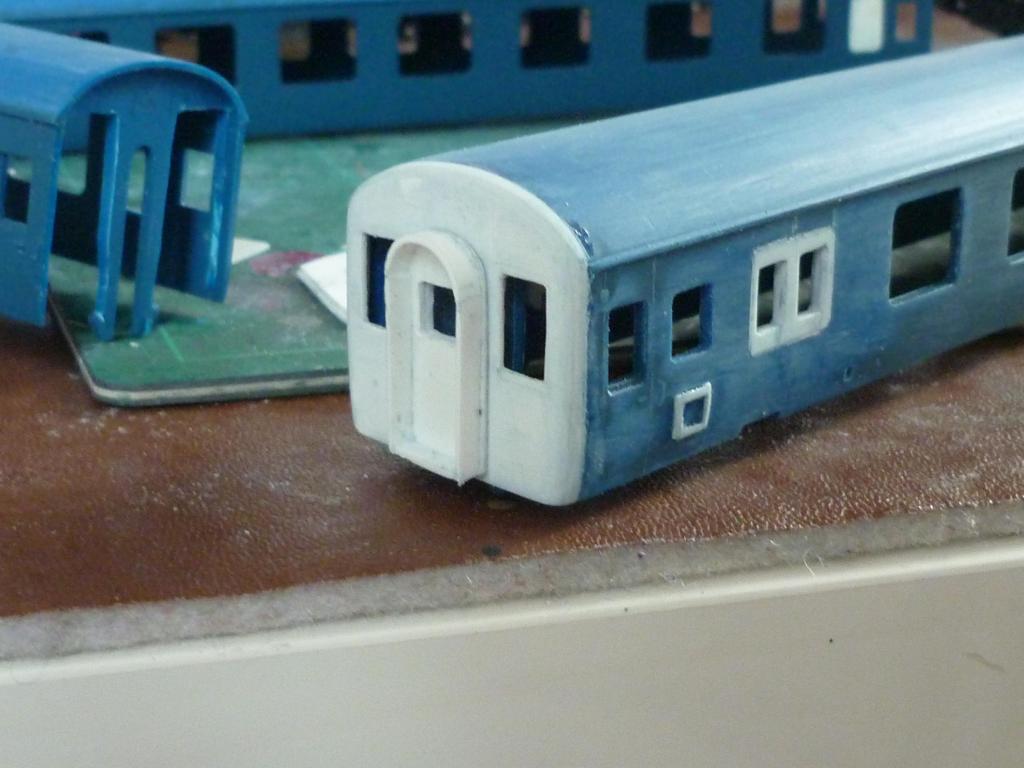
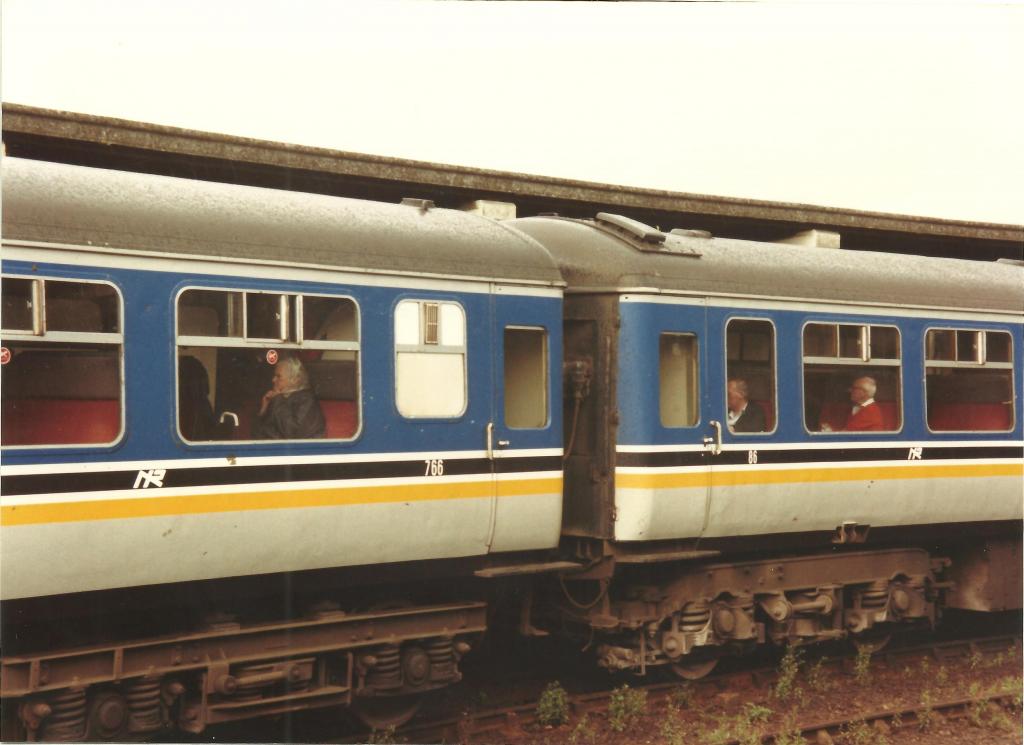
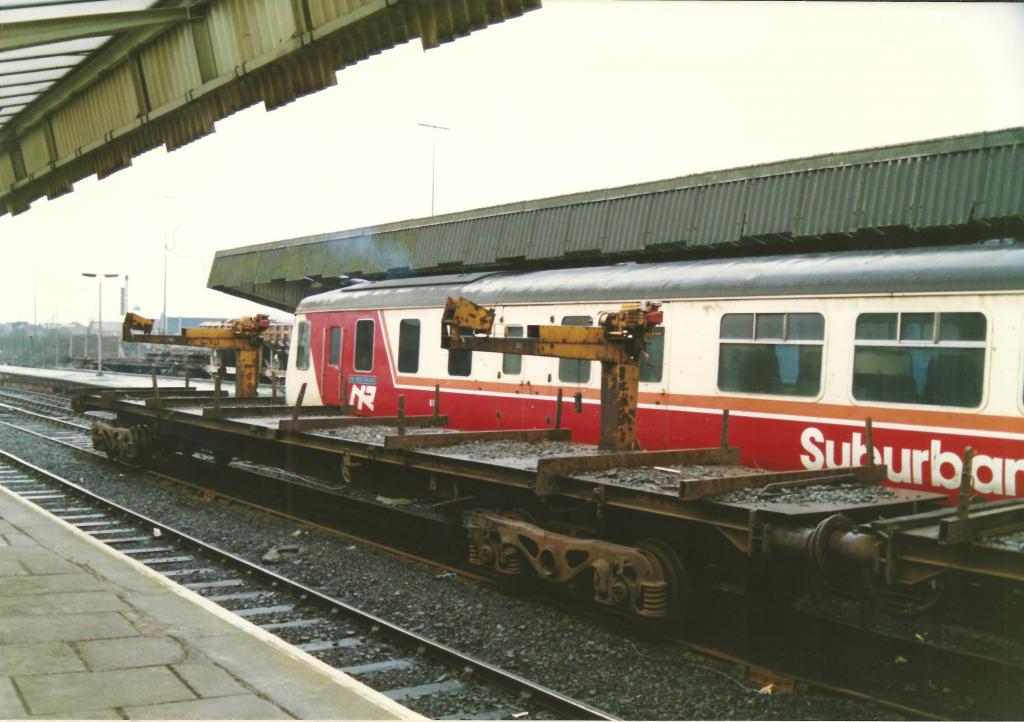
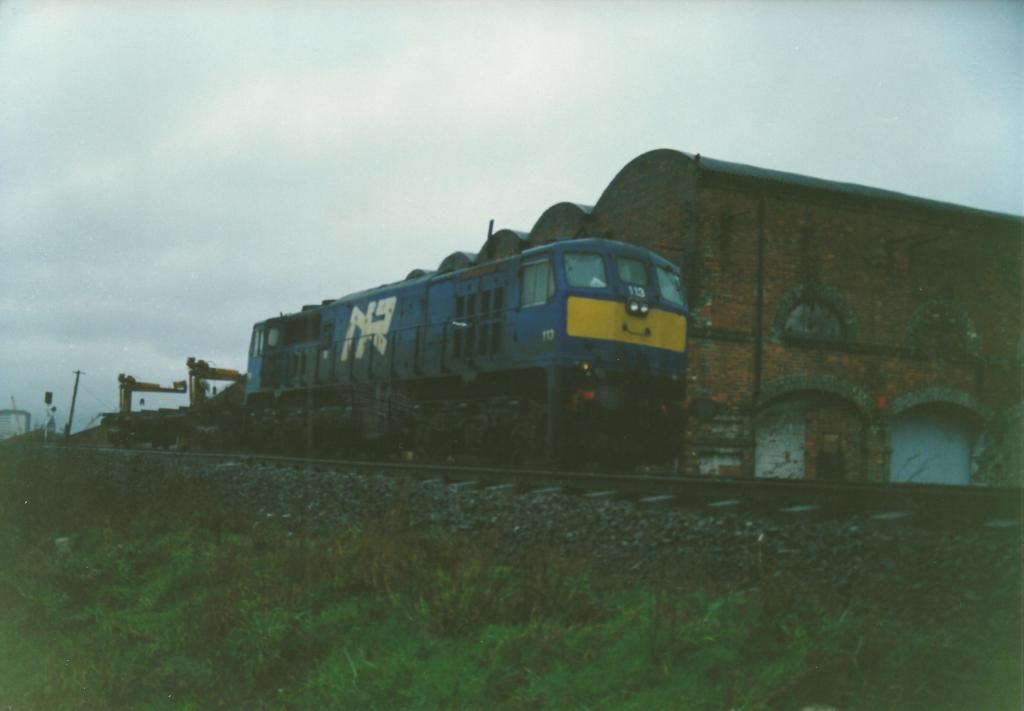
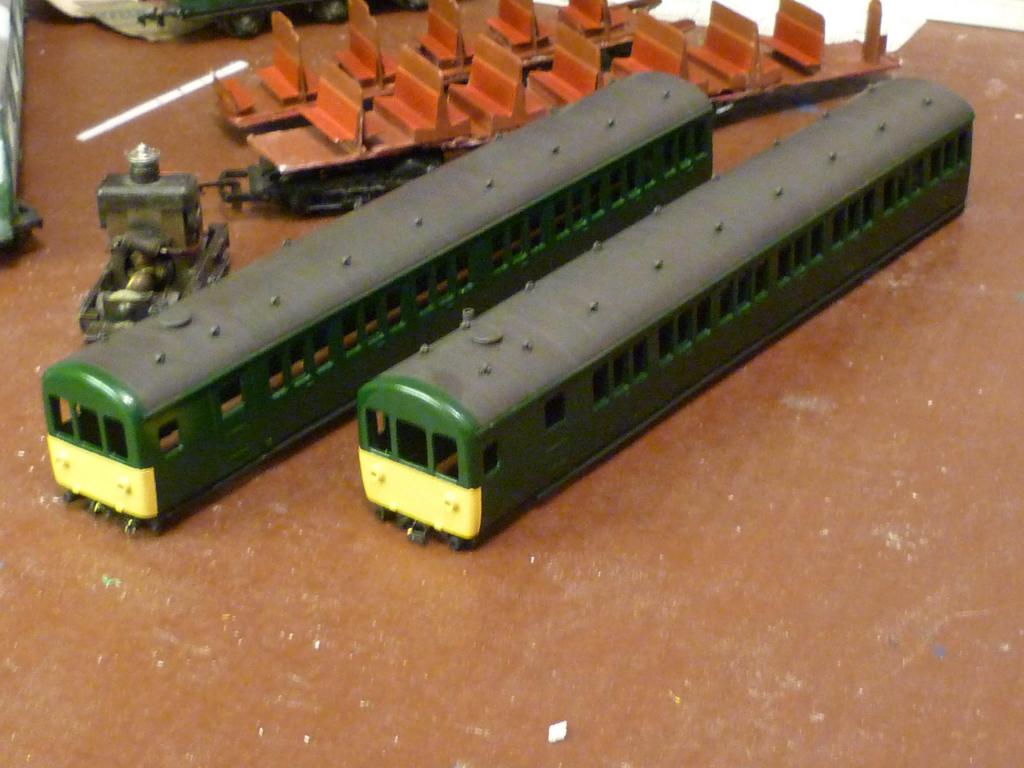
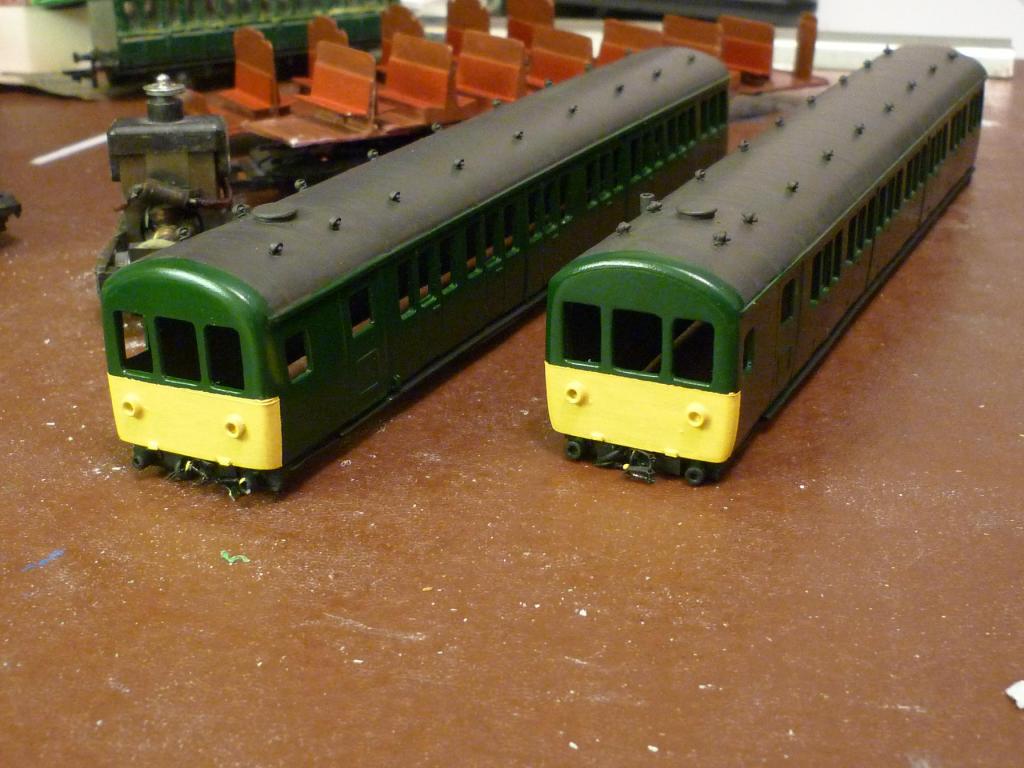
.jpg.fc4d3651e5e9bff35d2d0c378c88ee7f.jpg)
